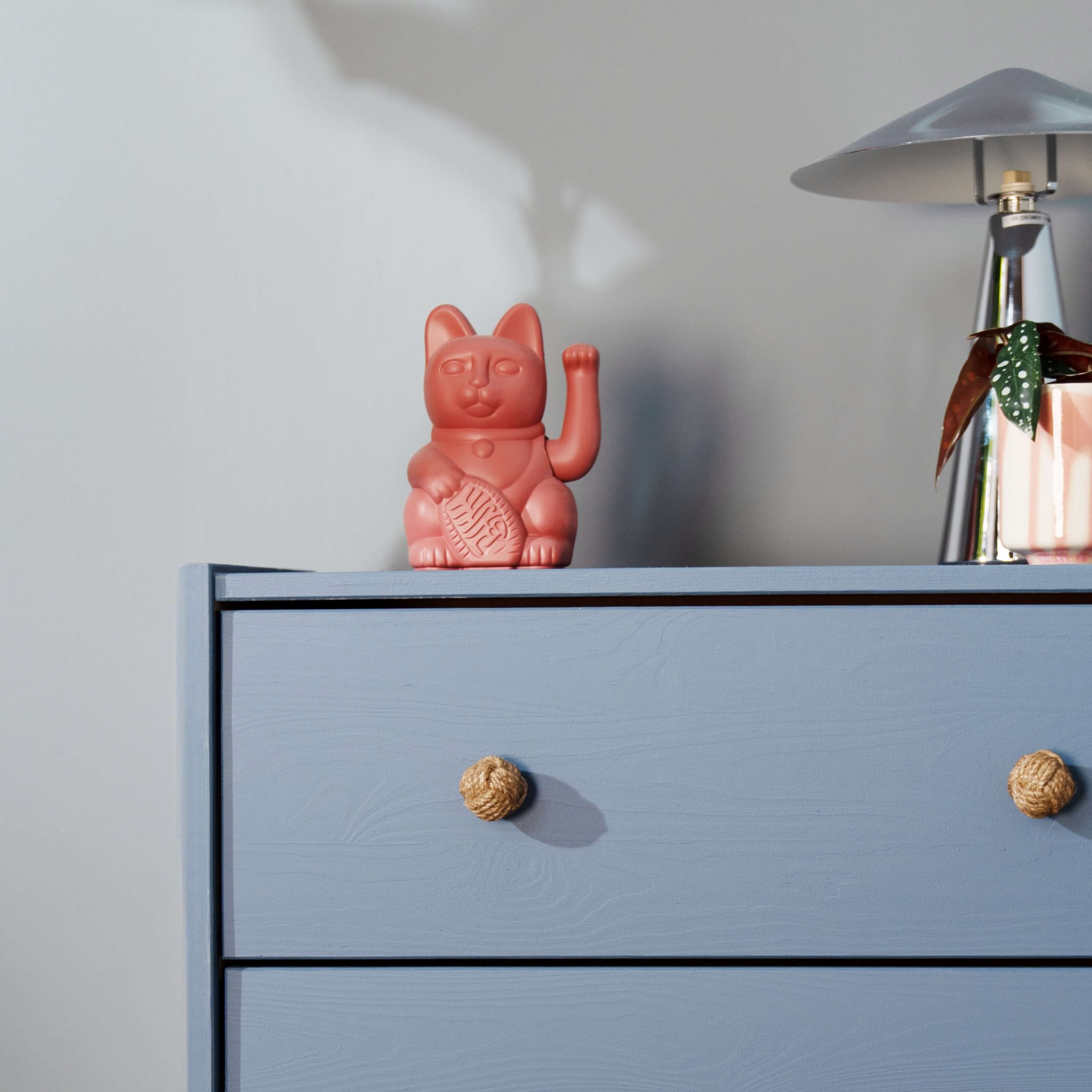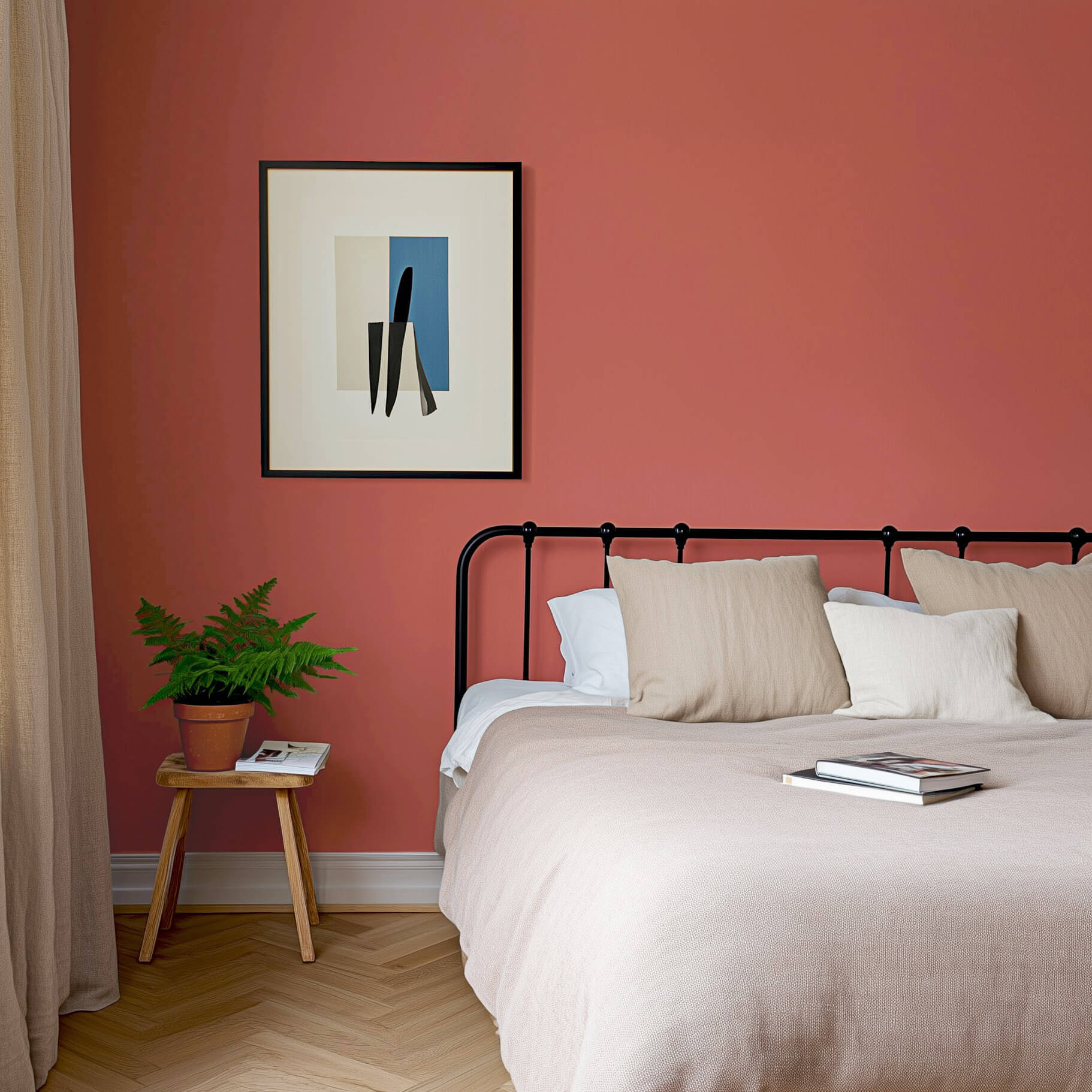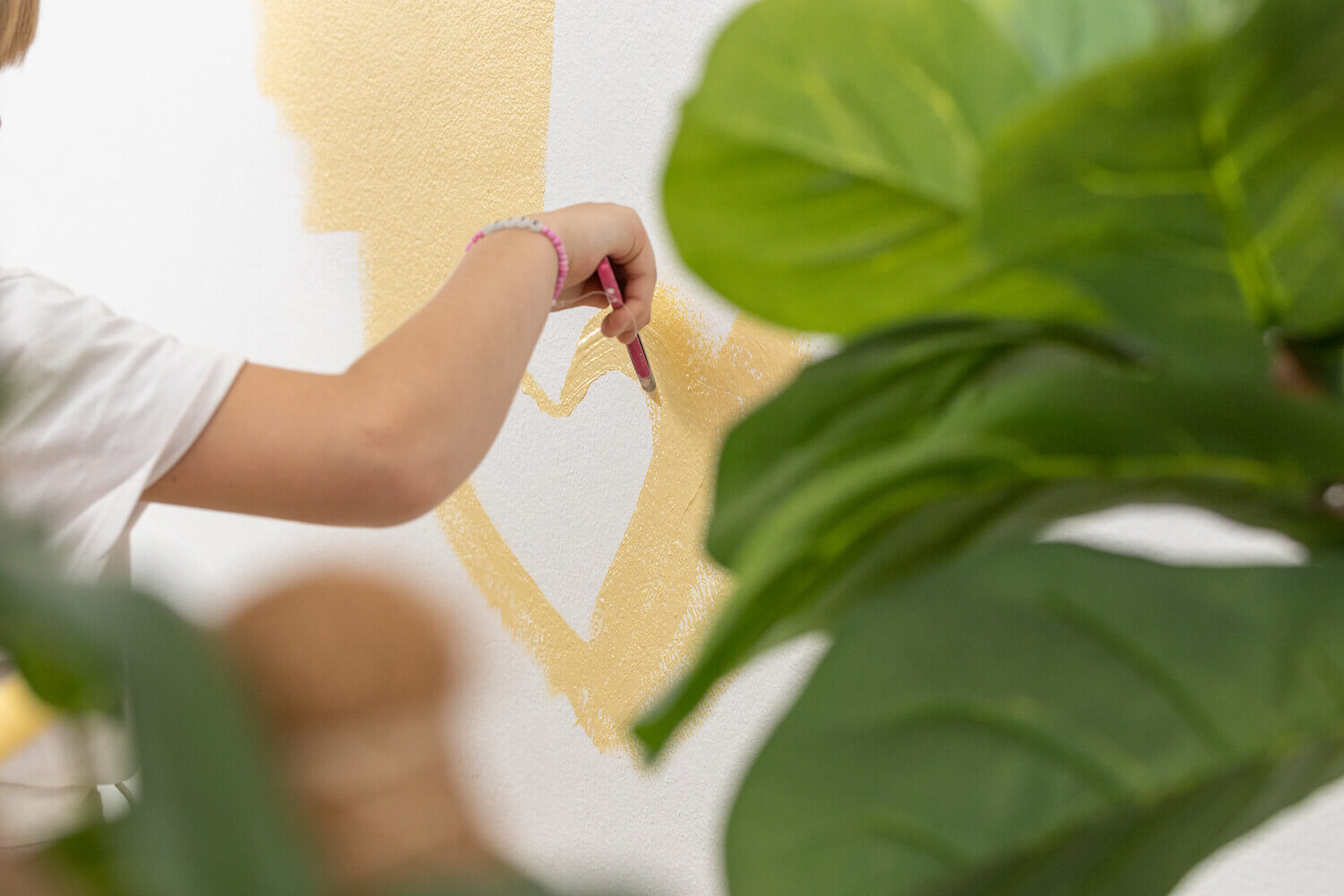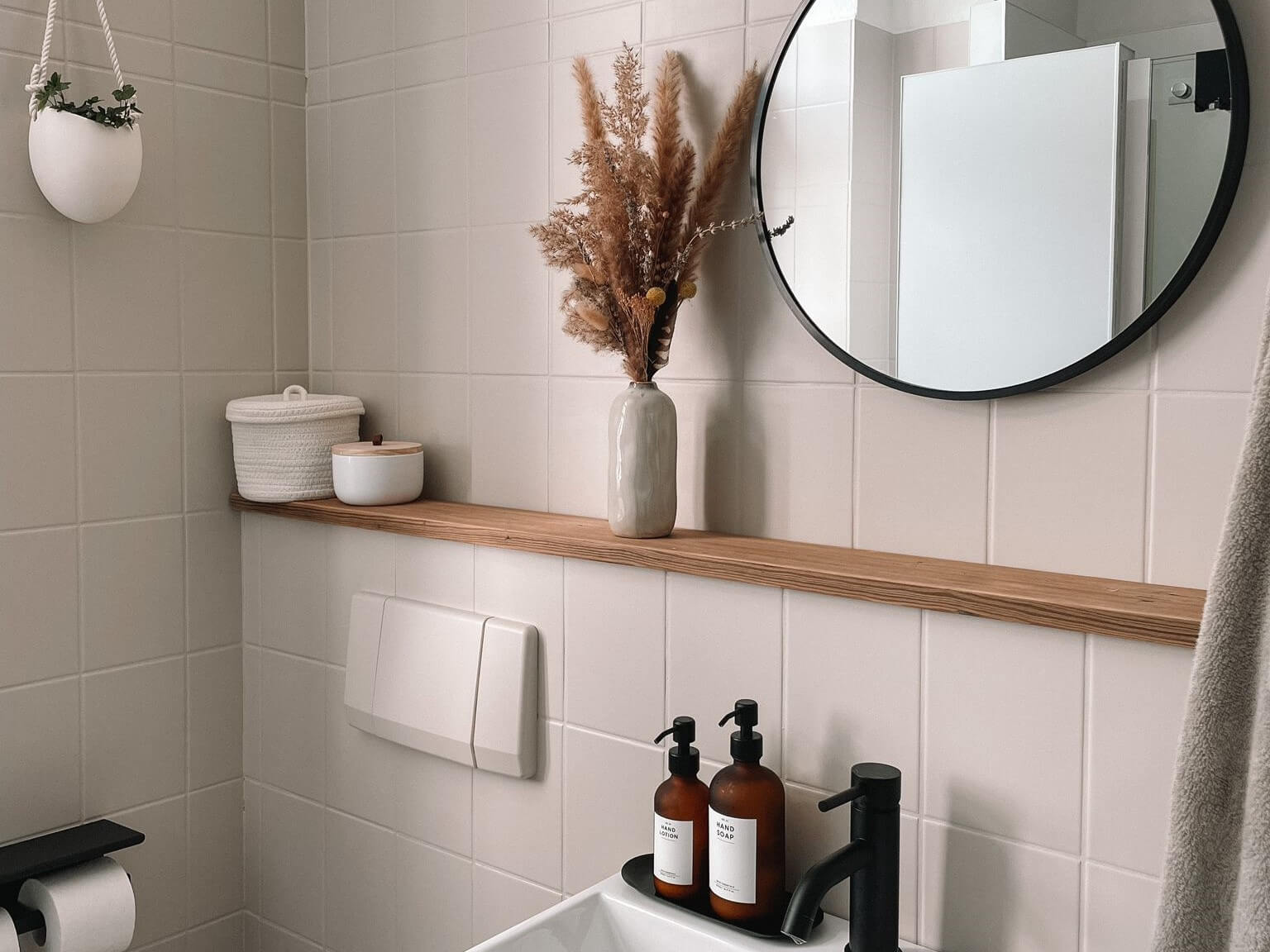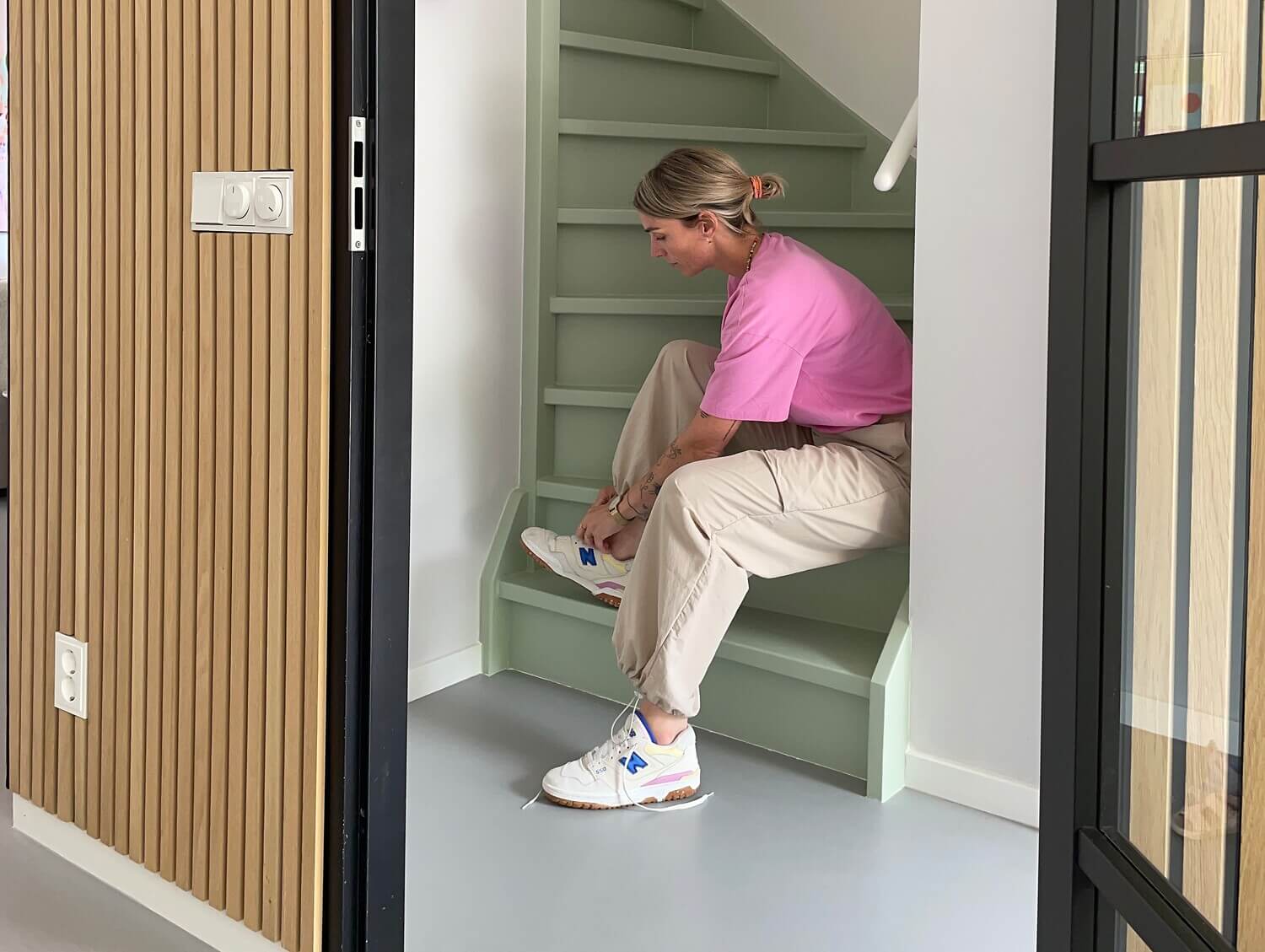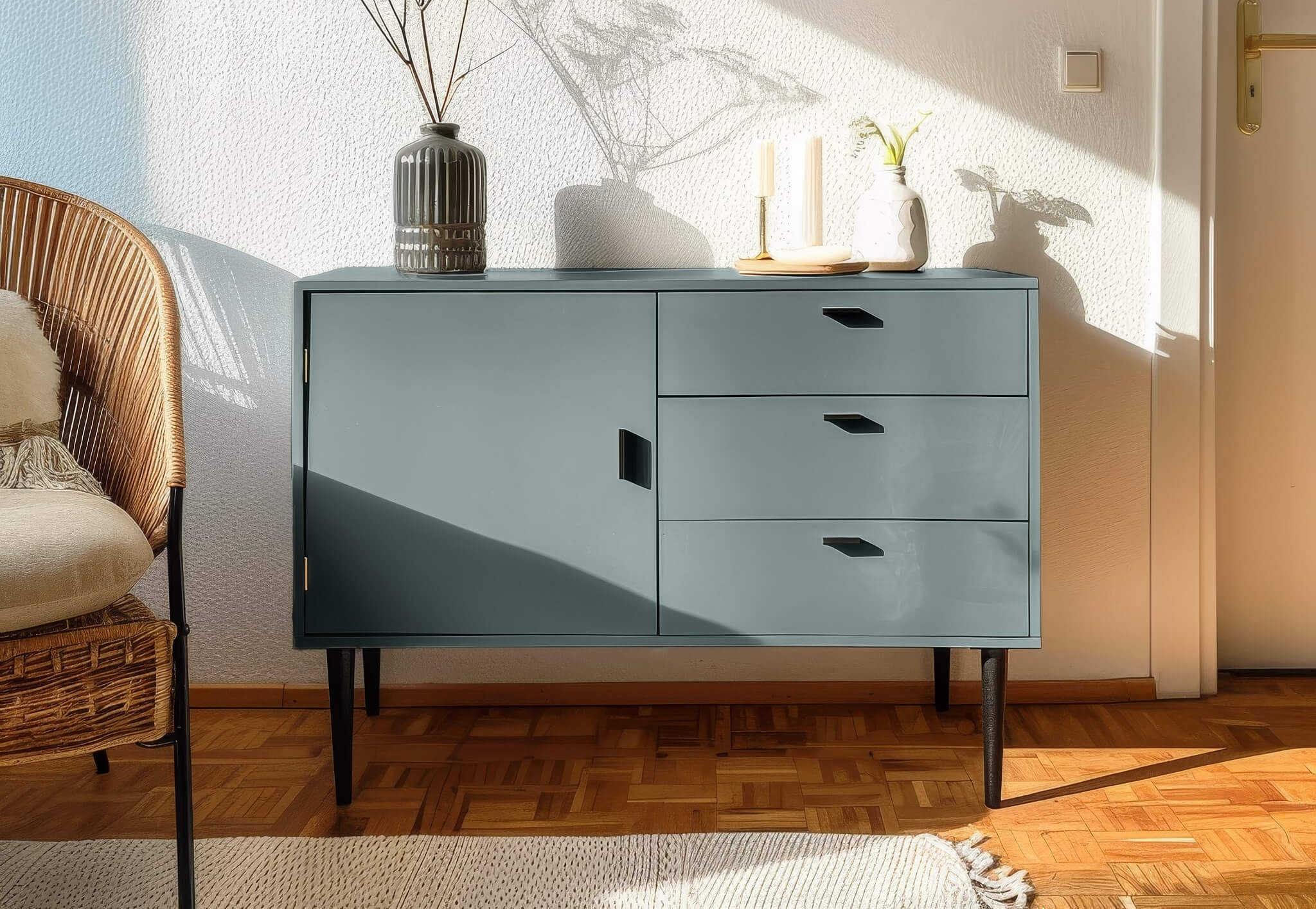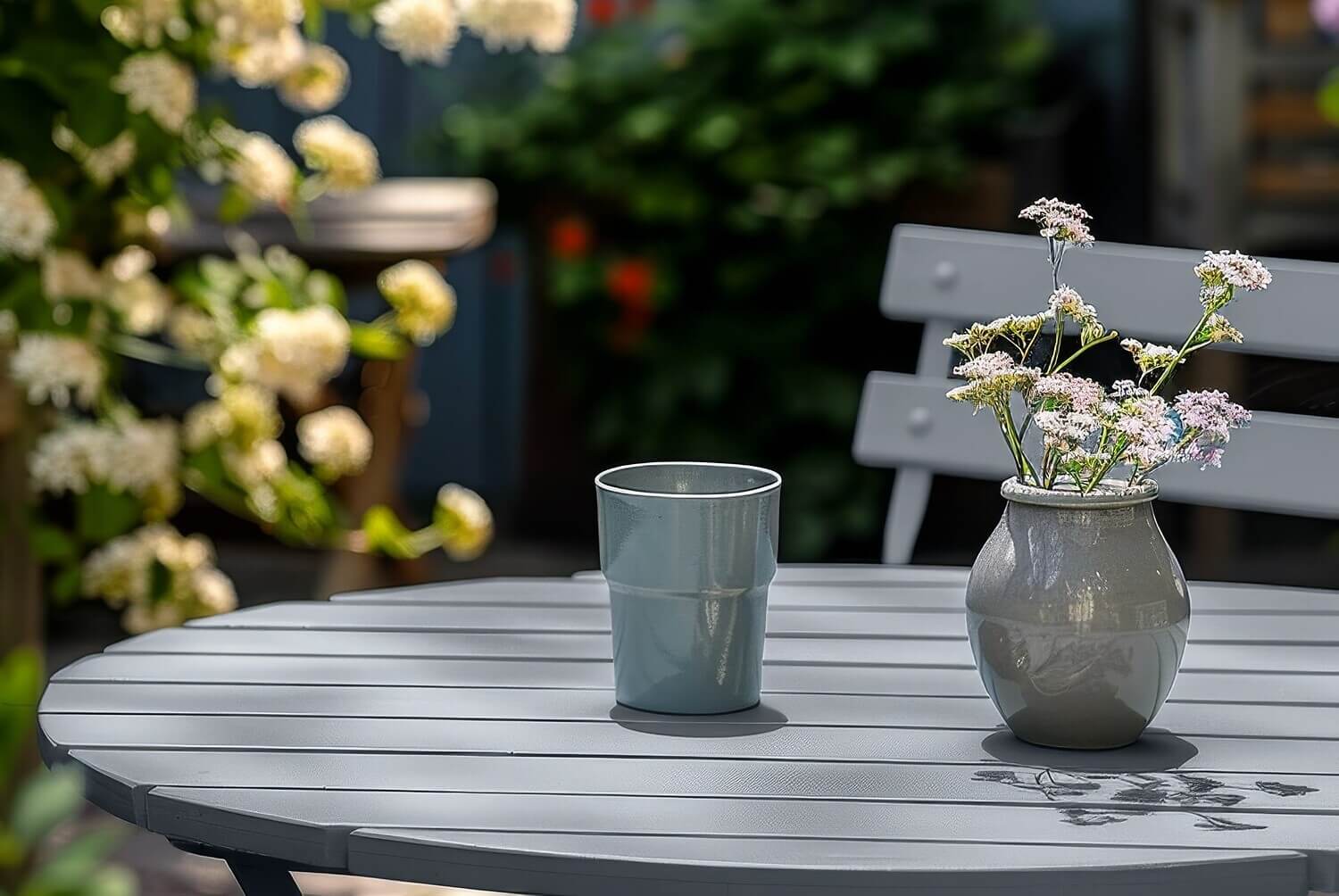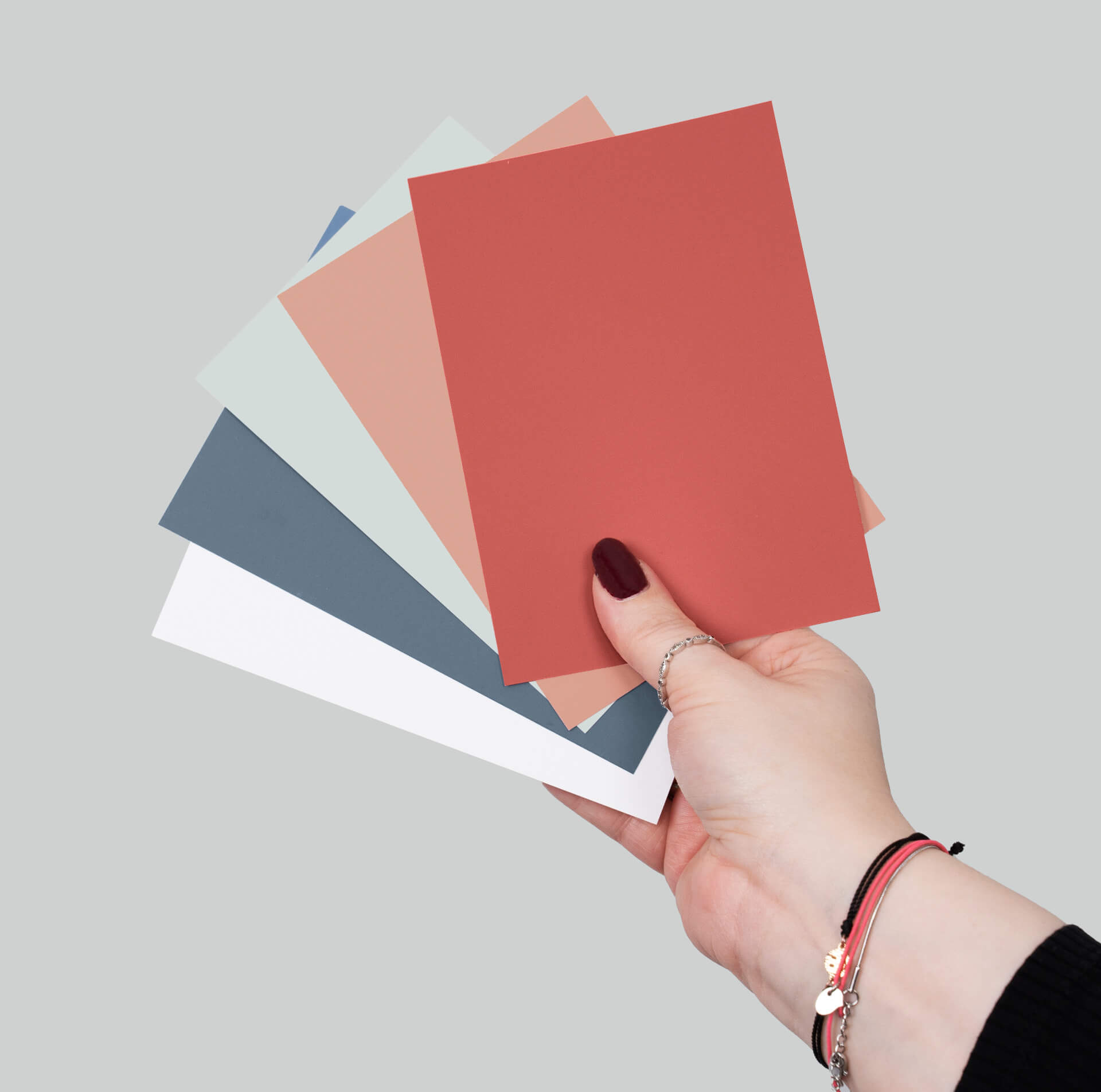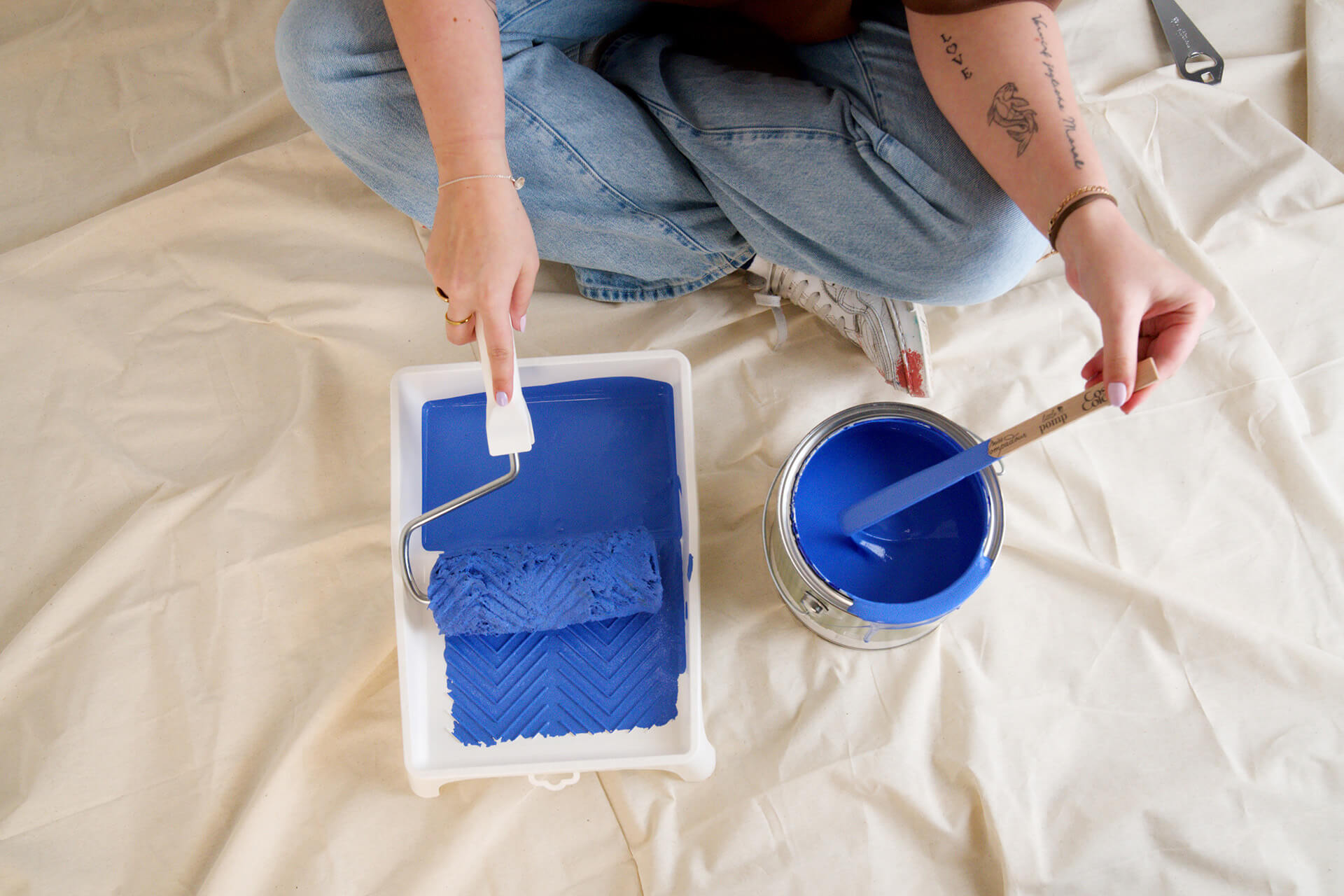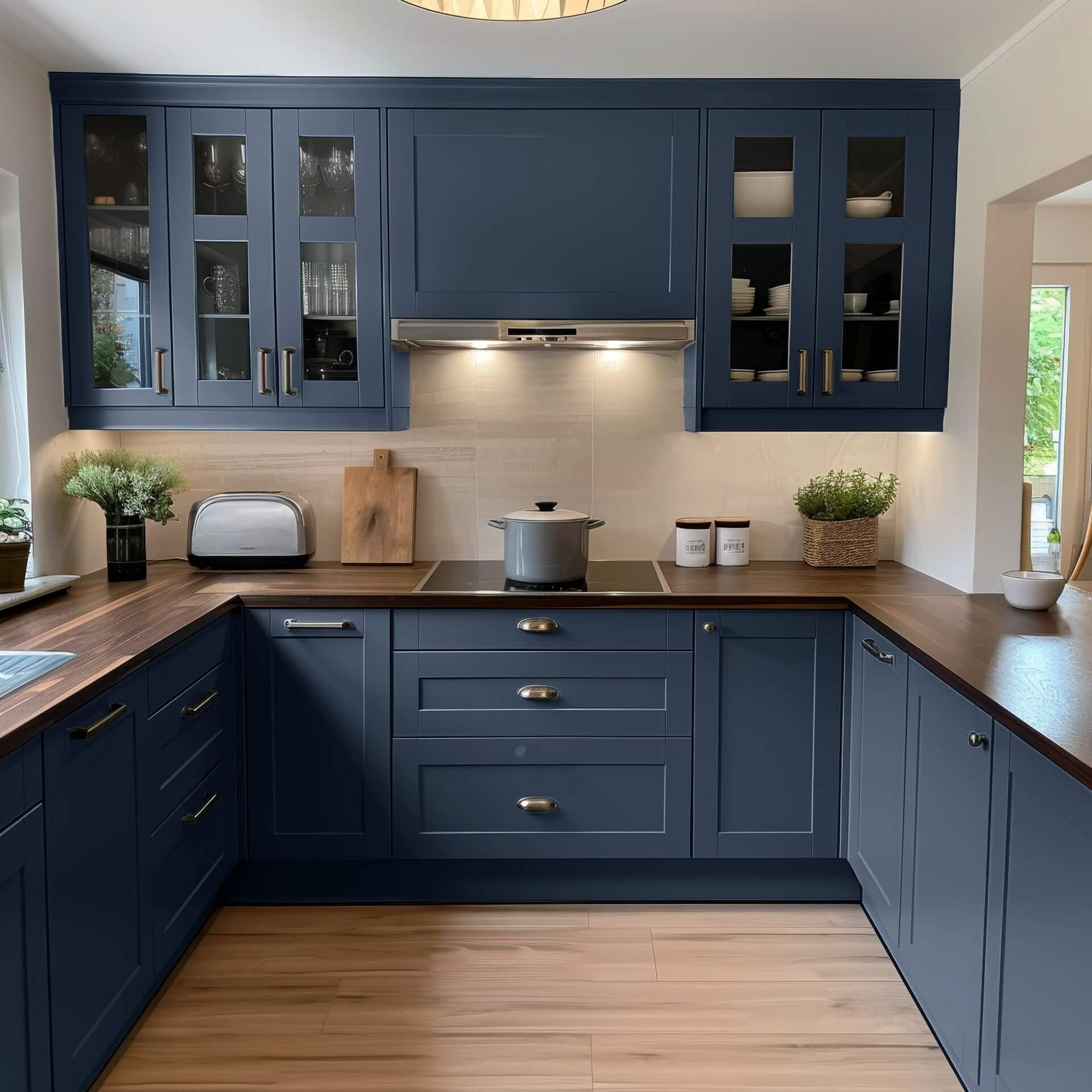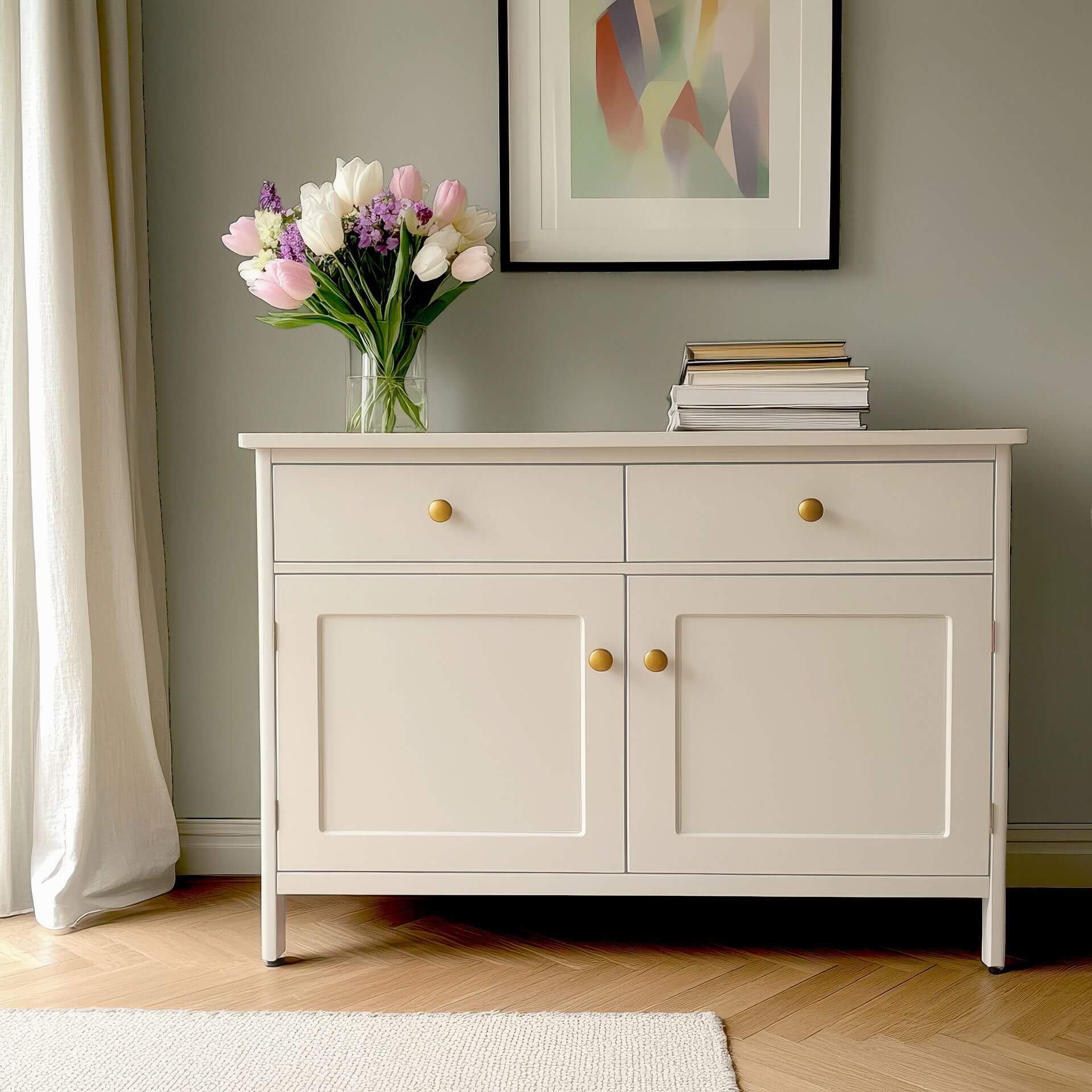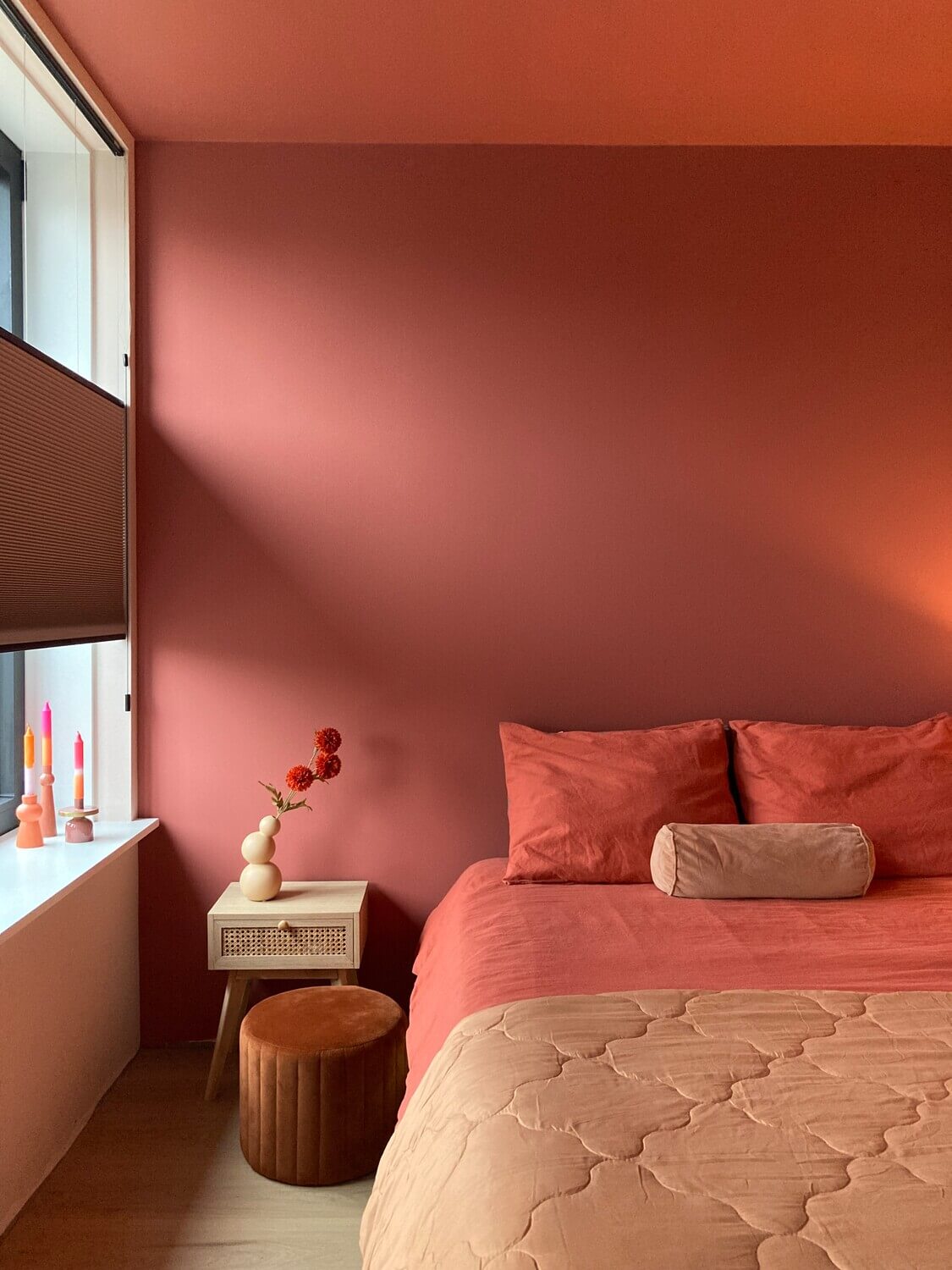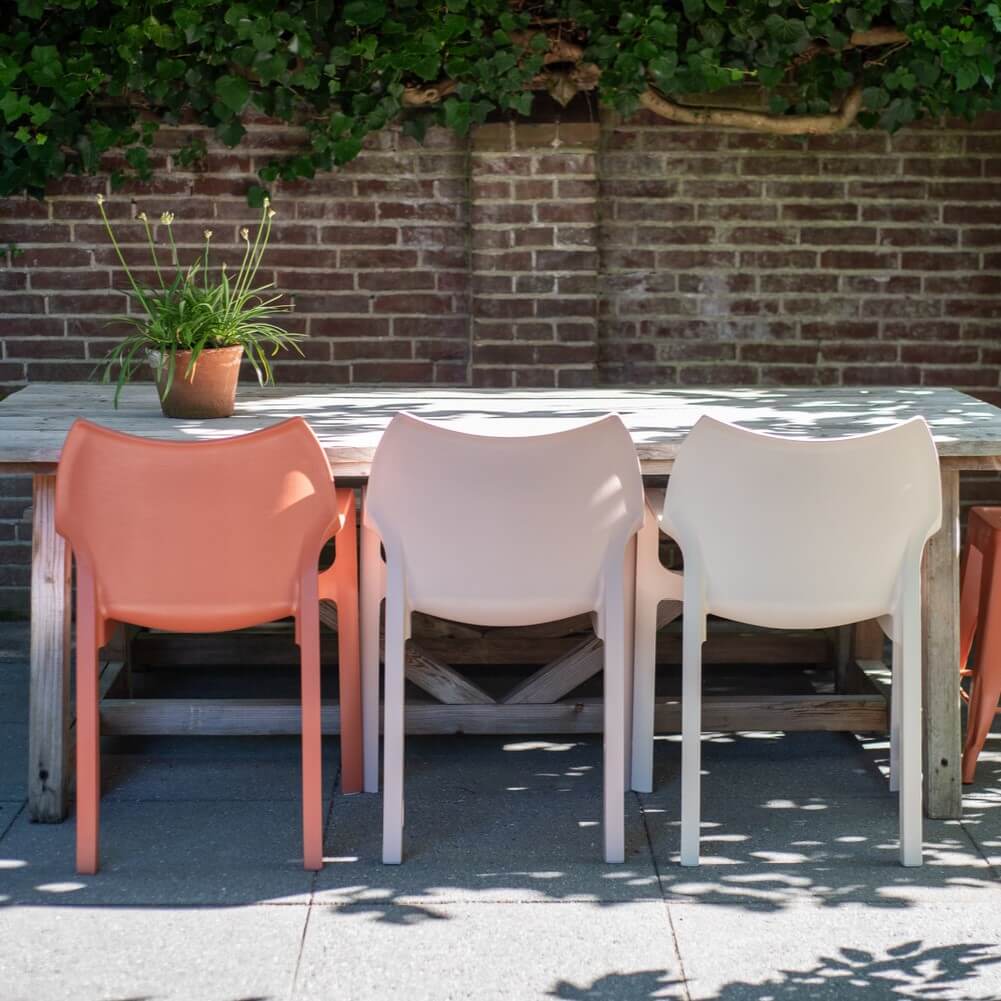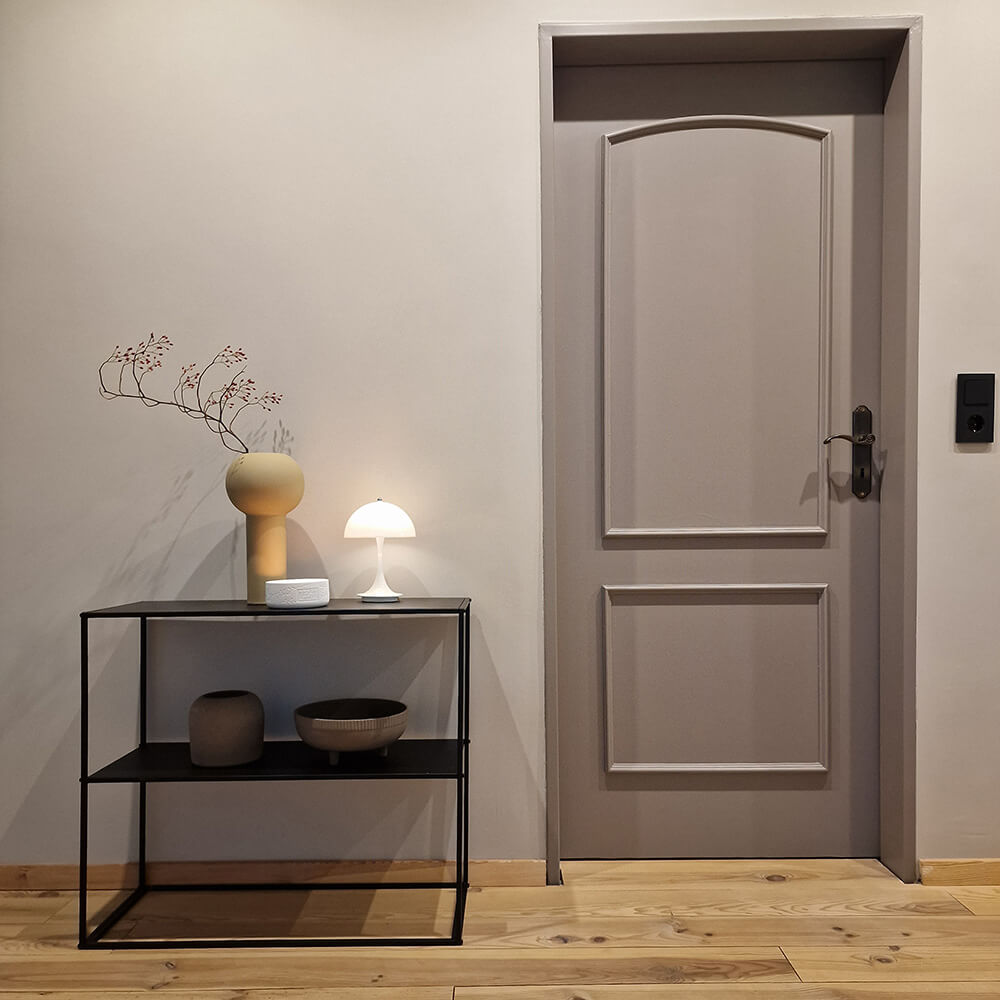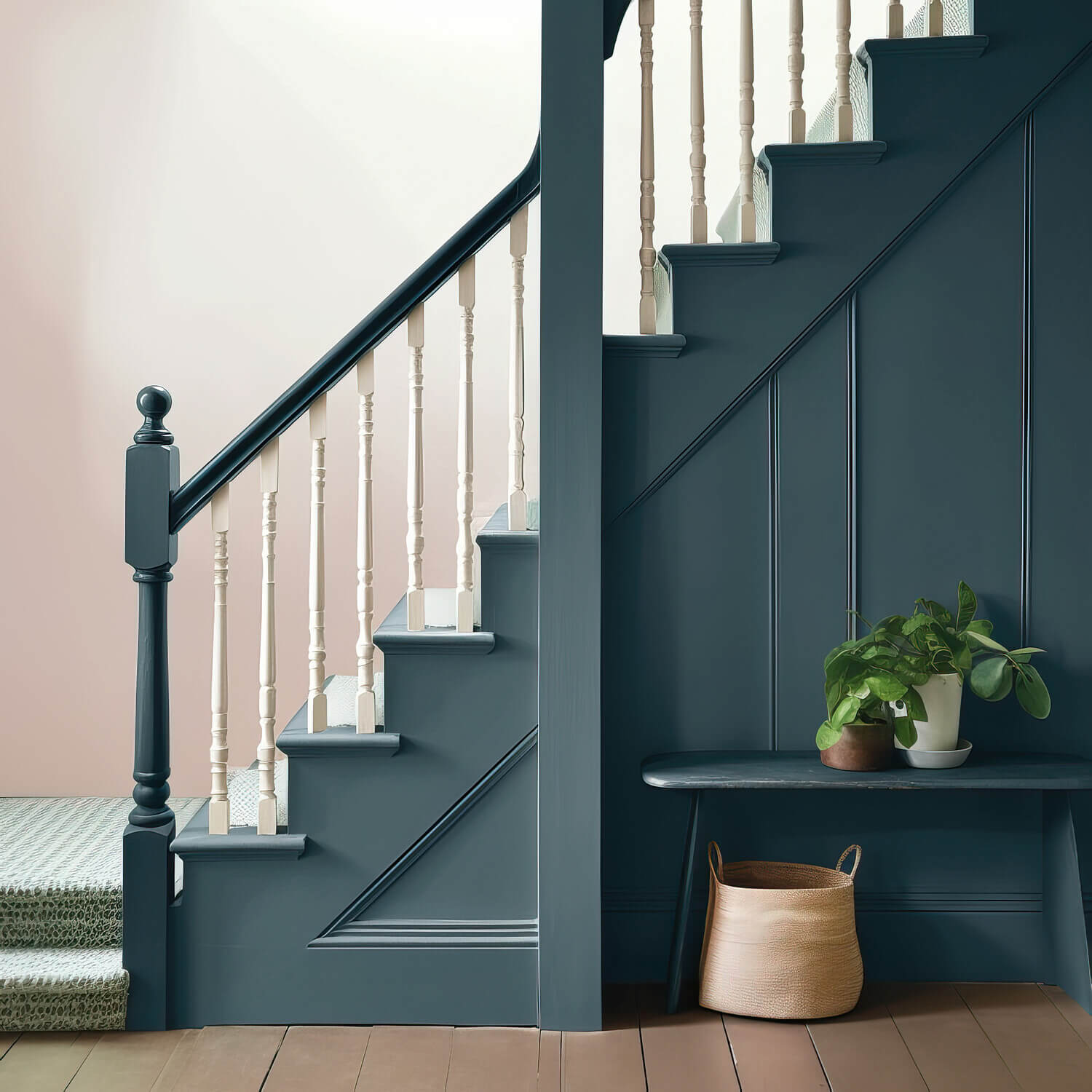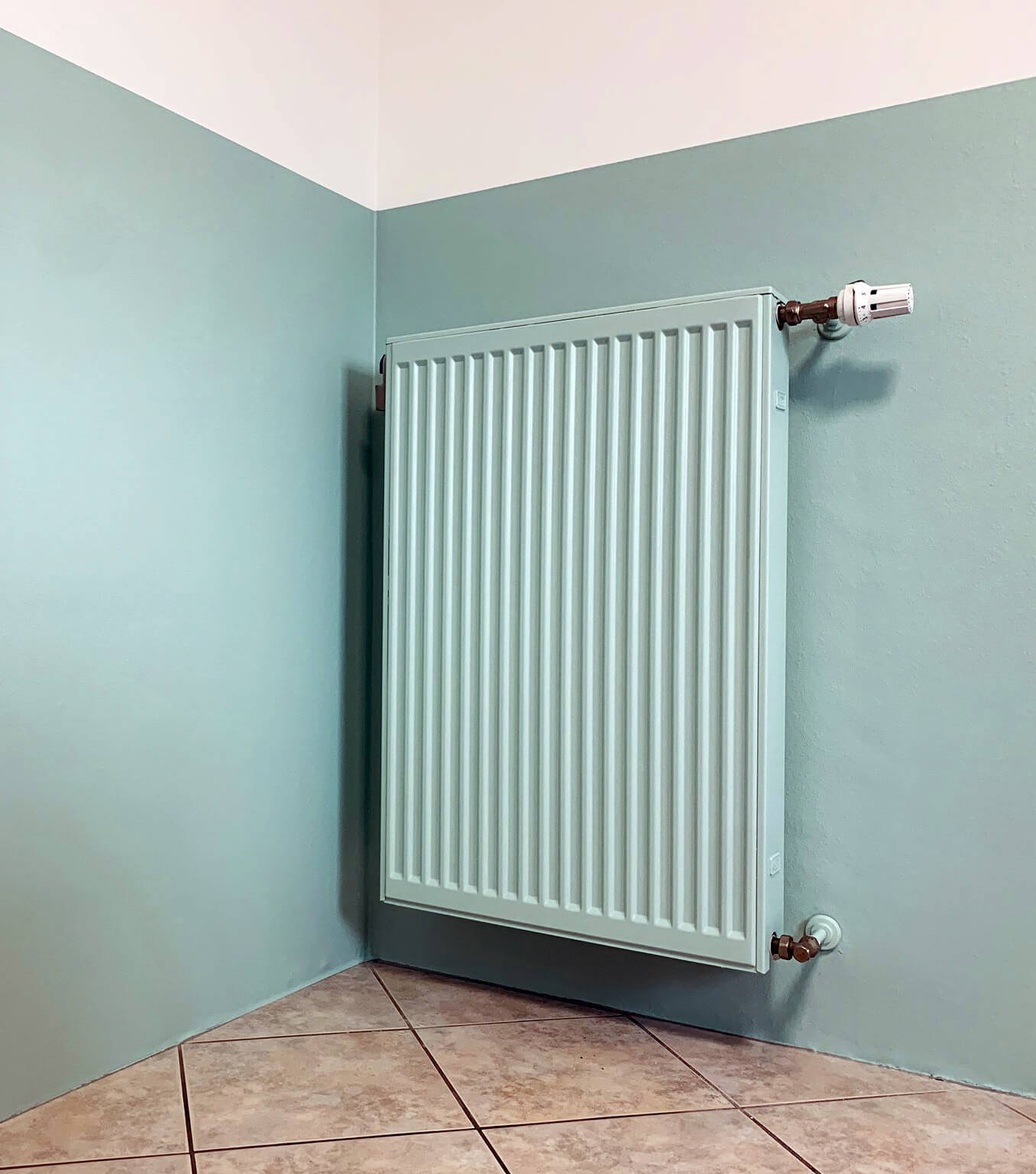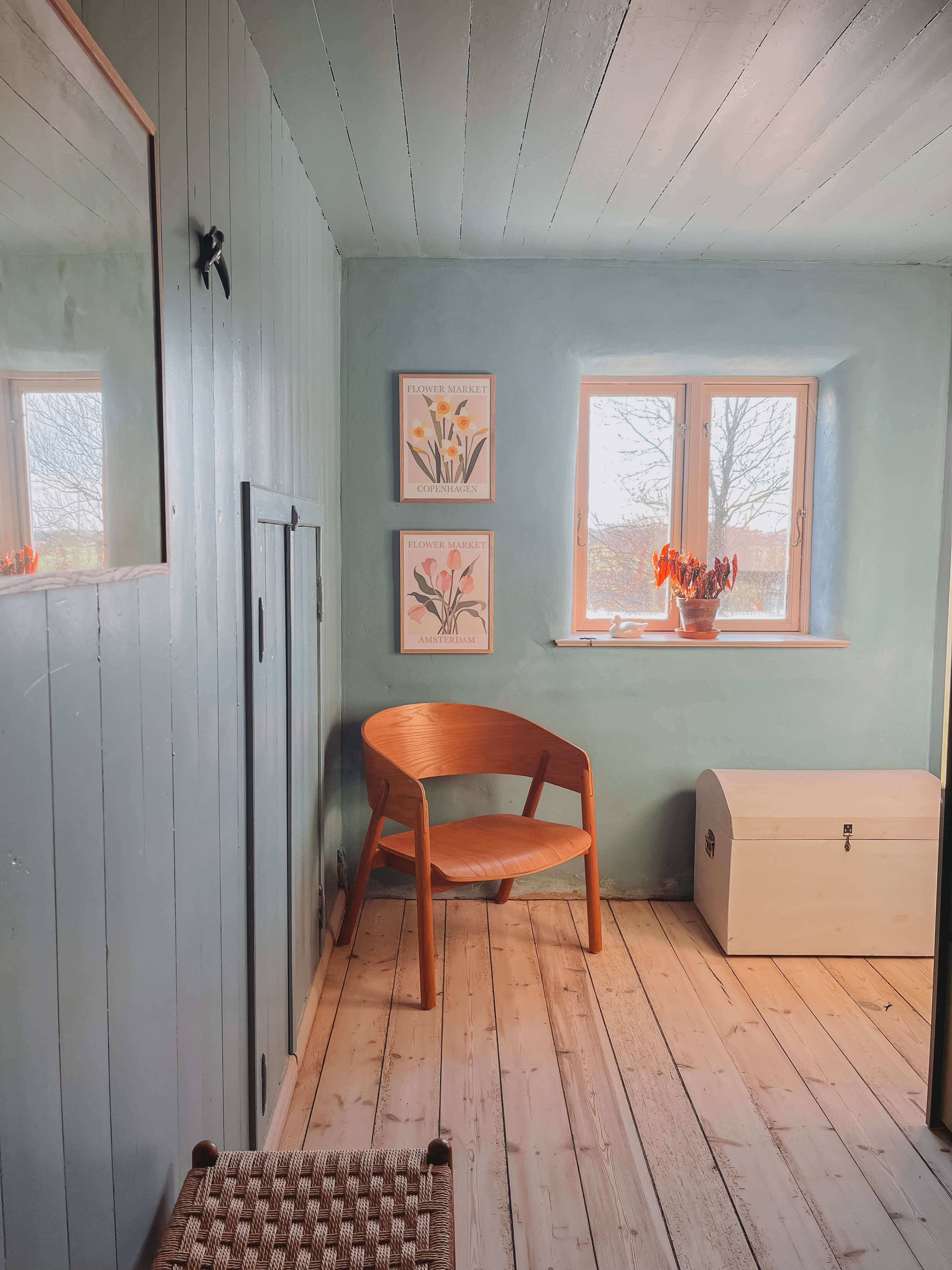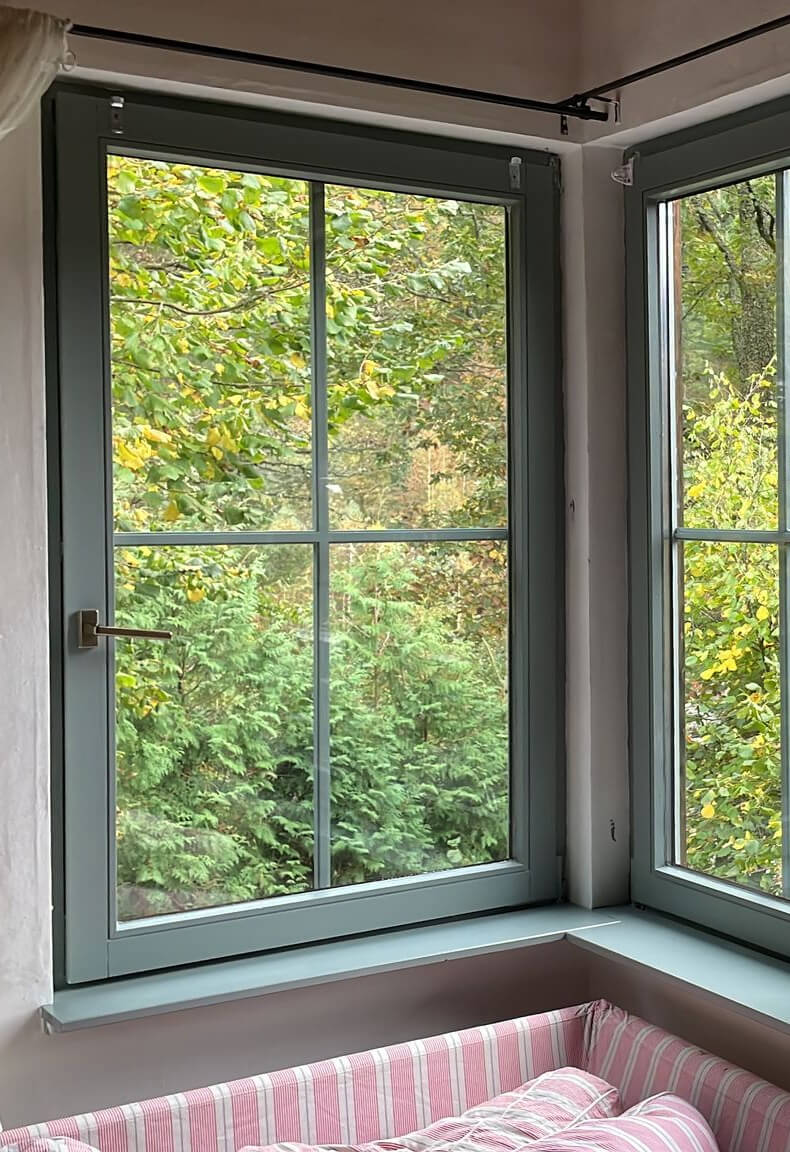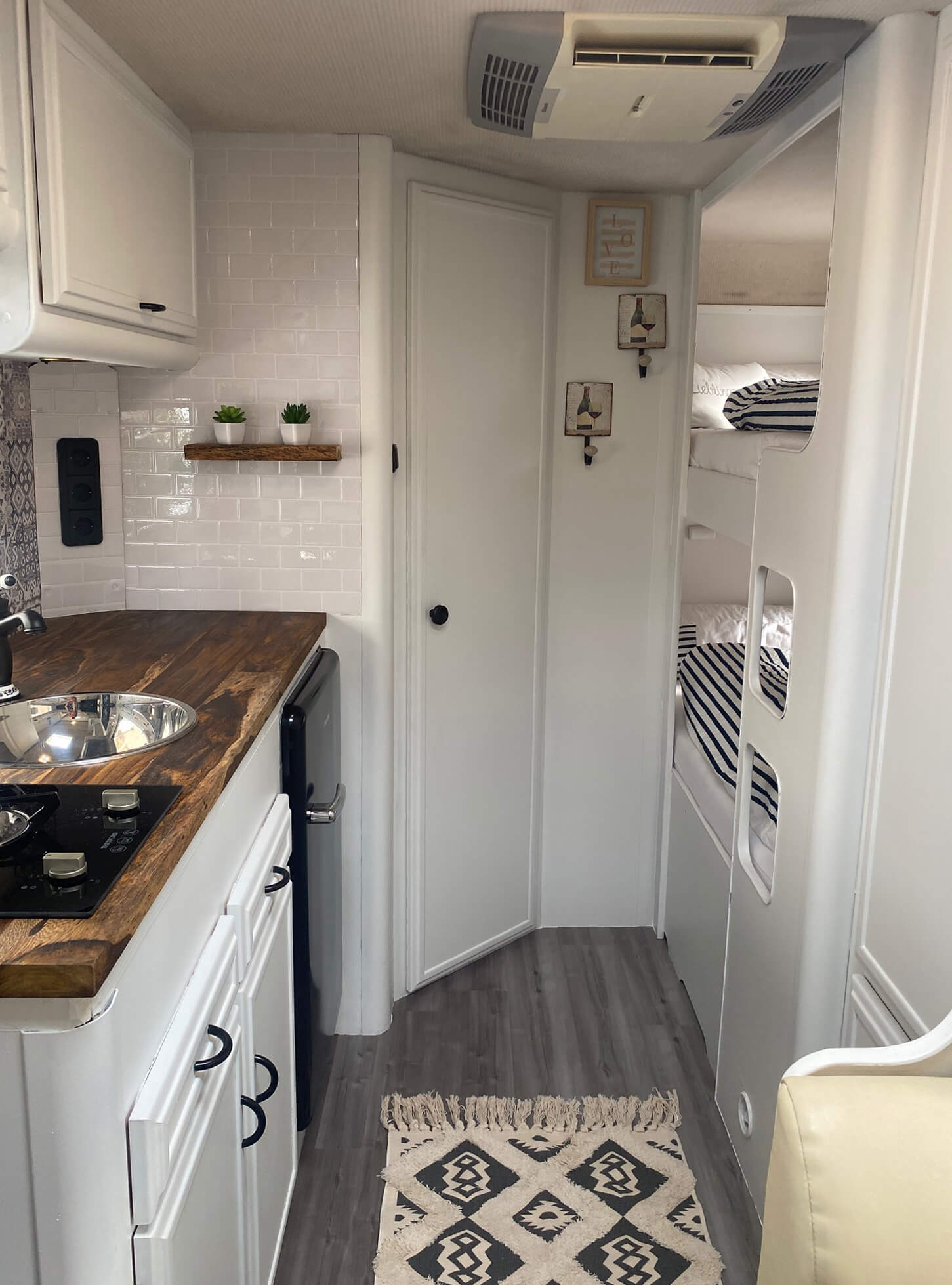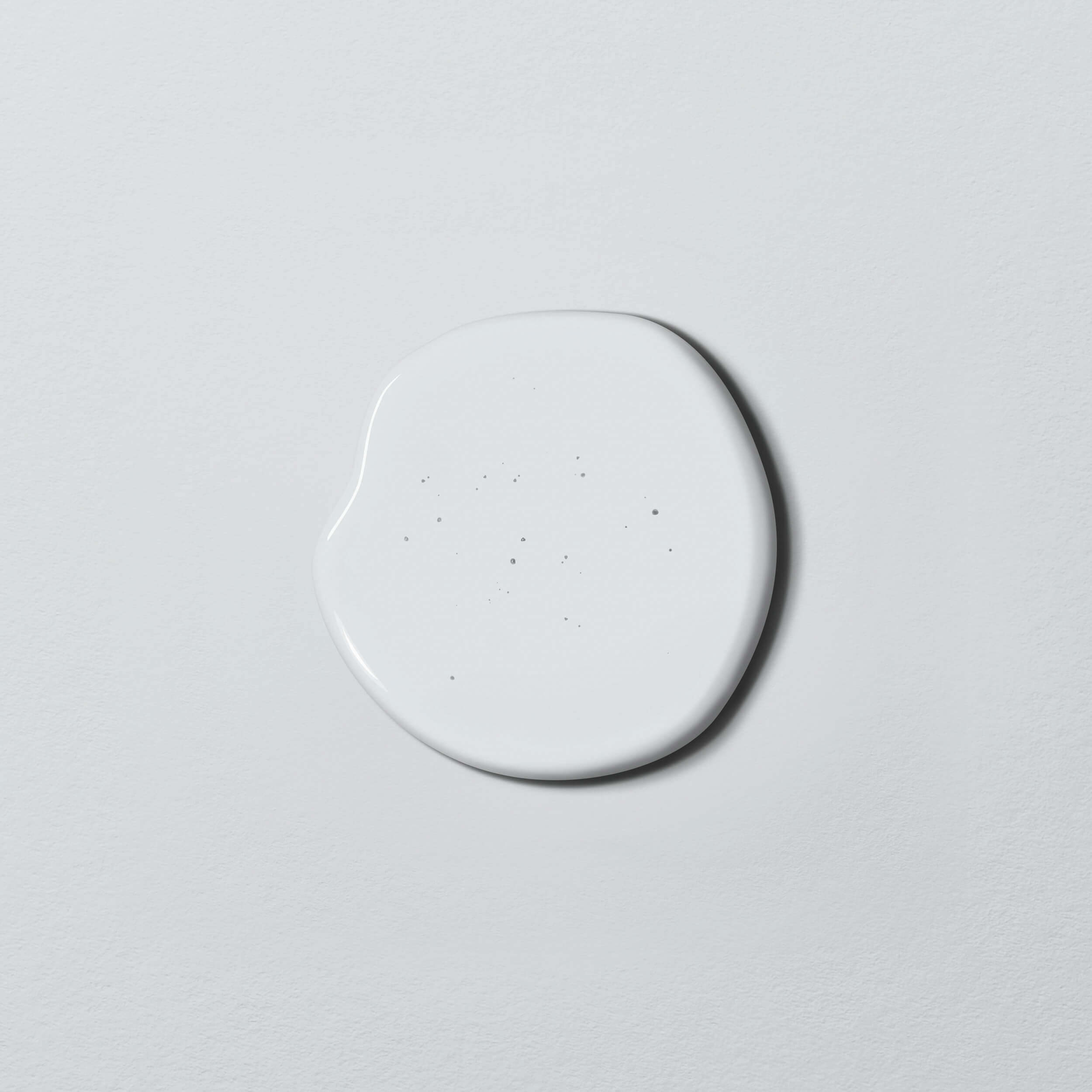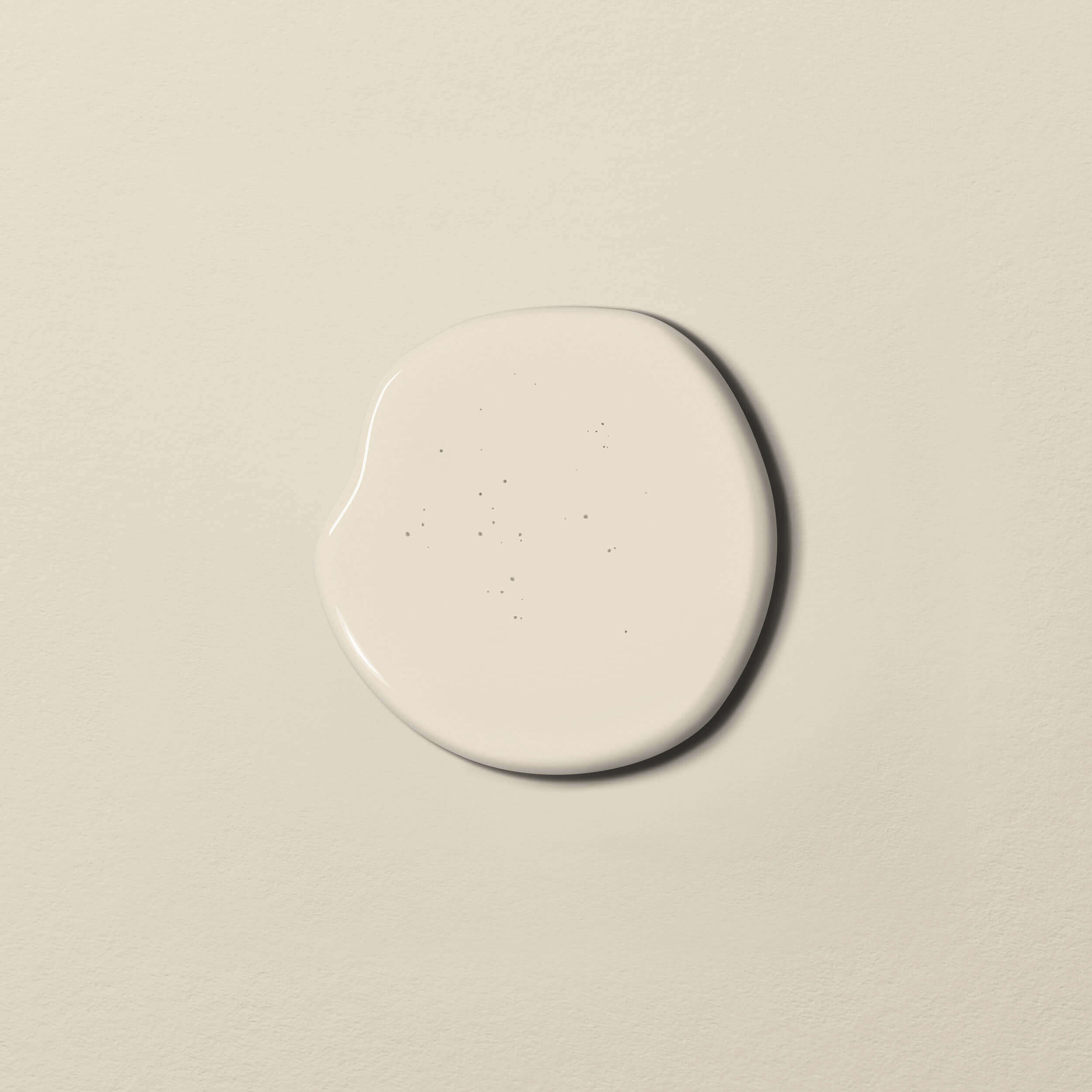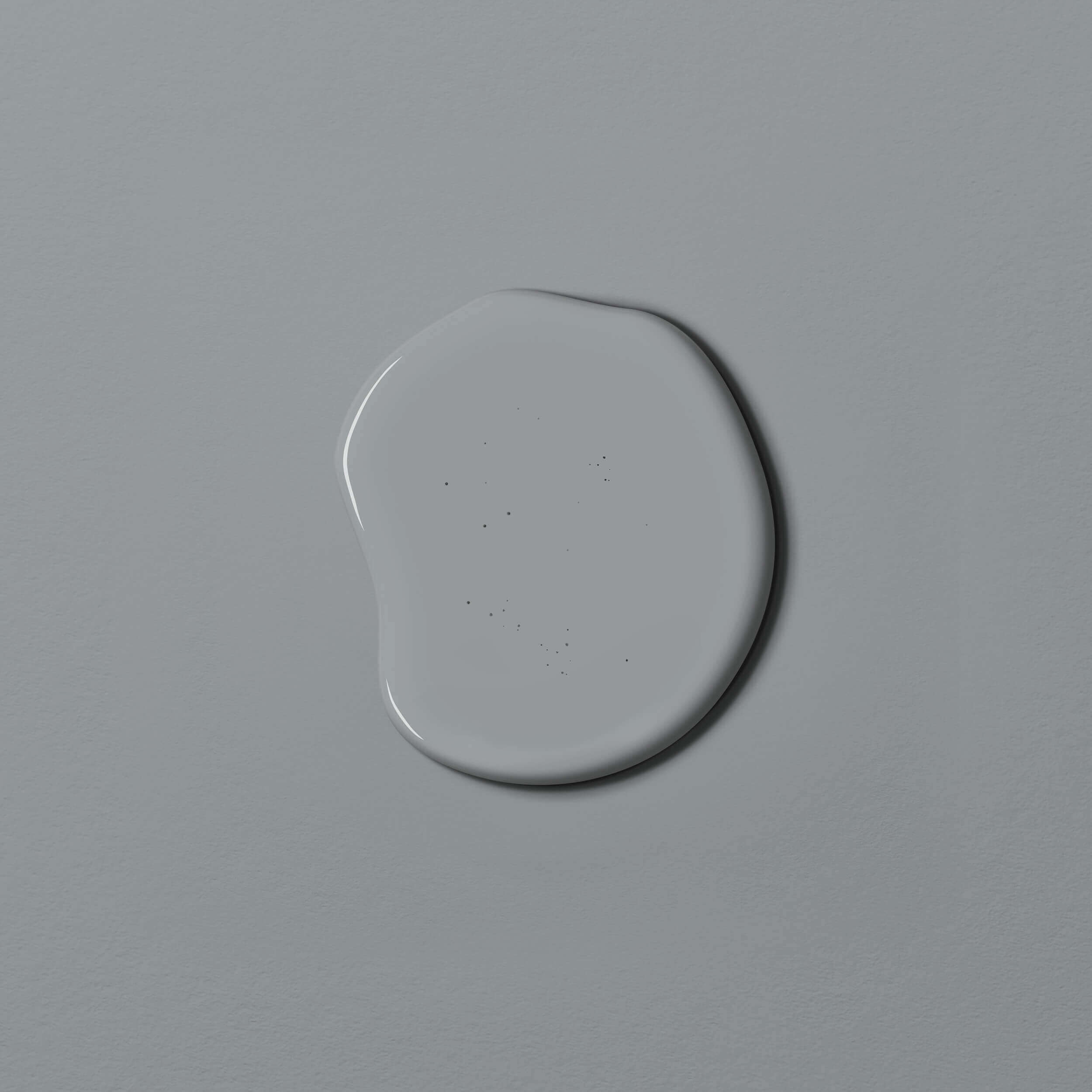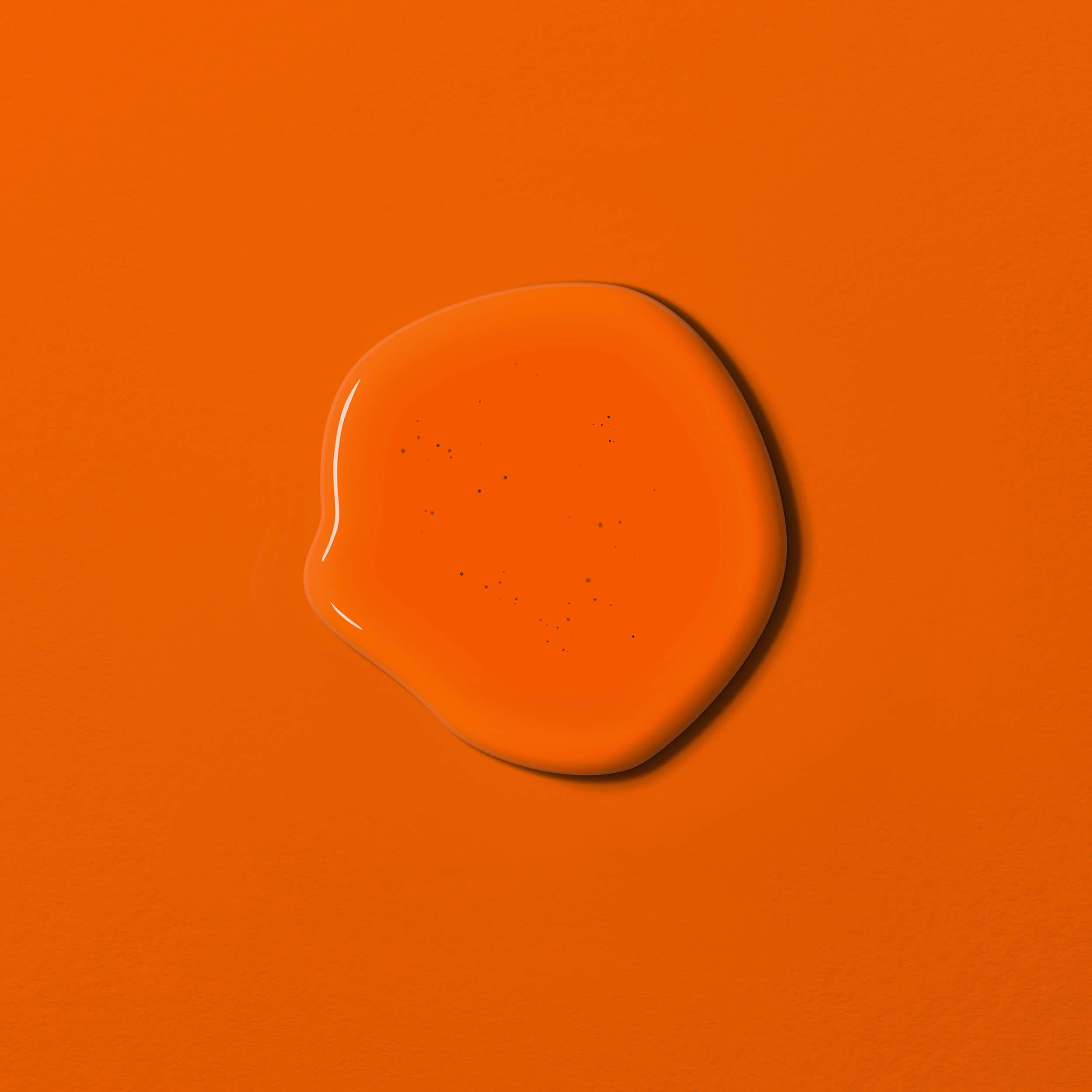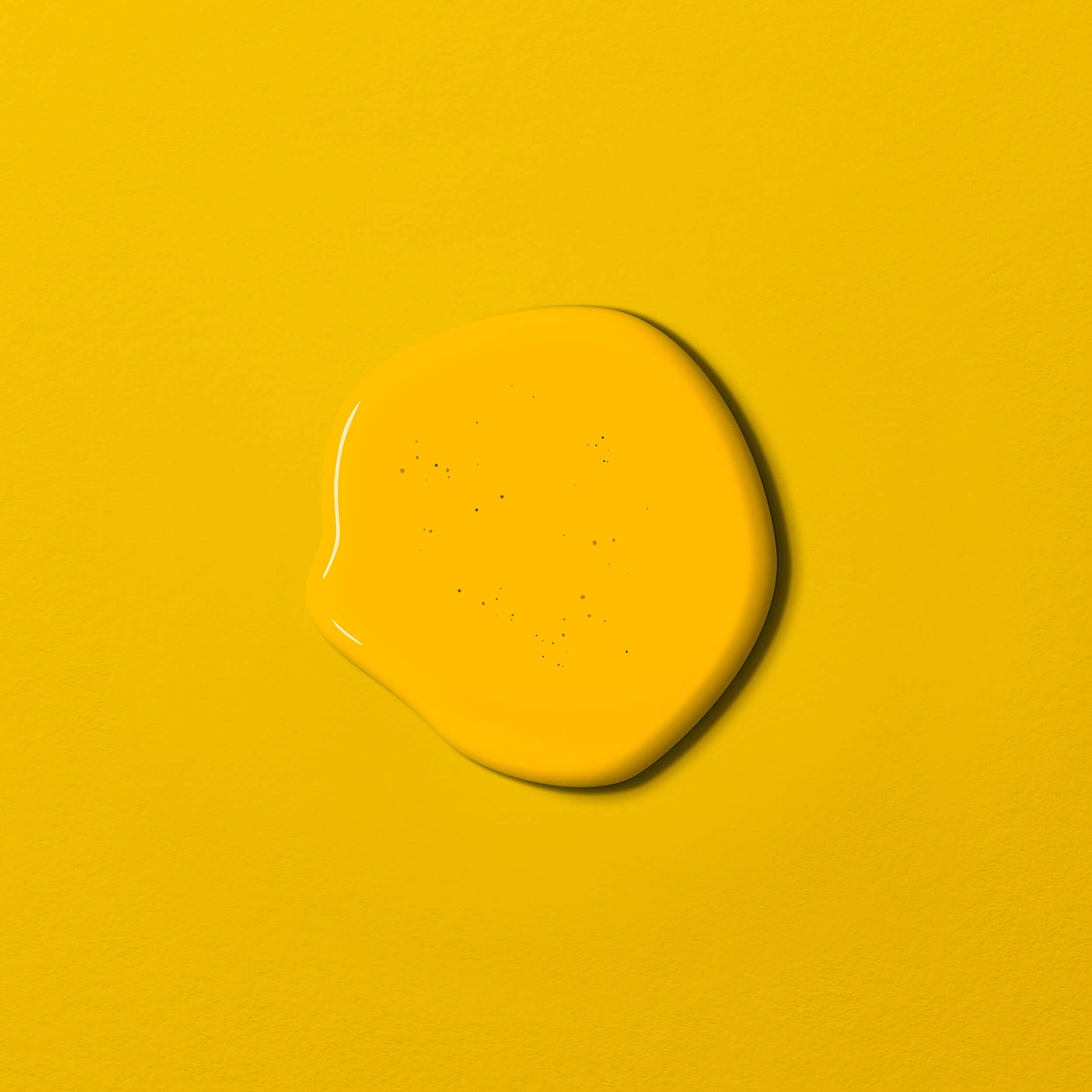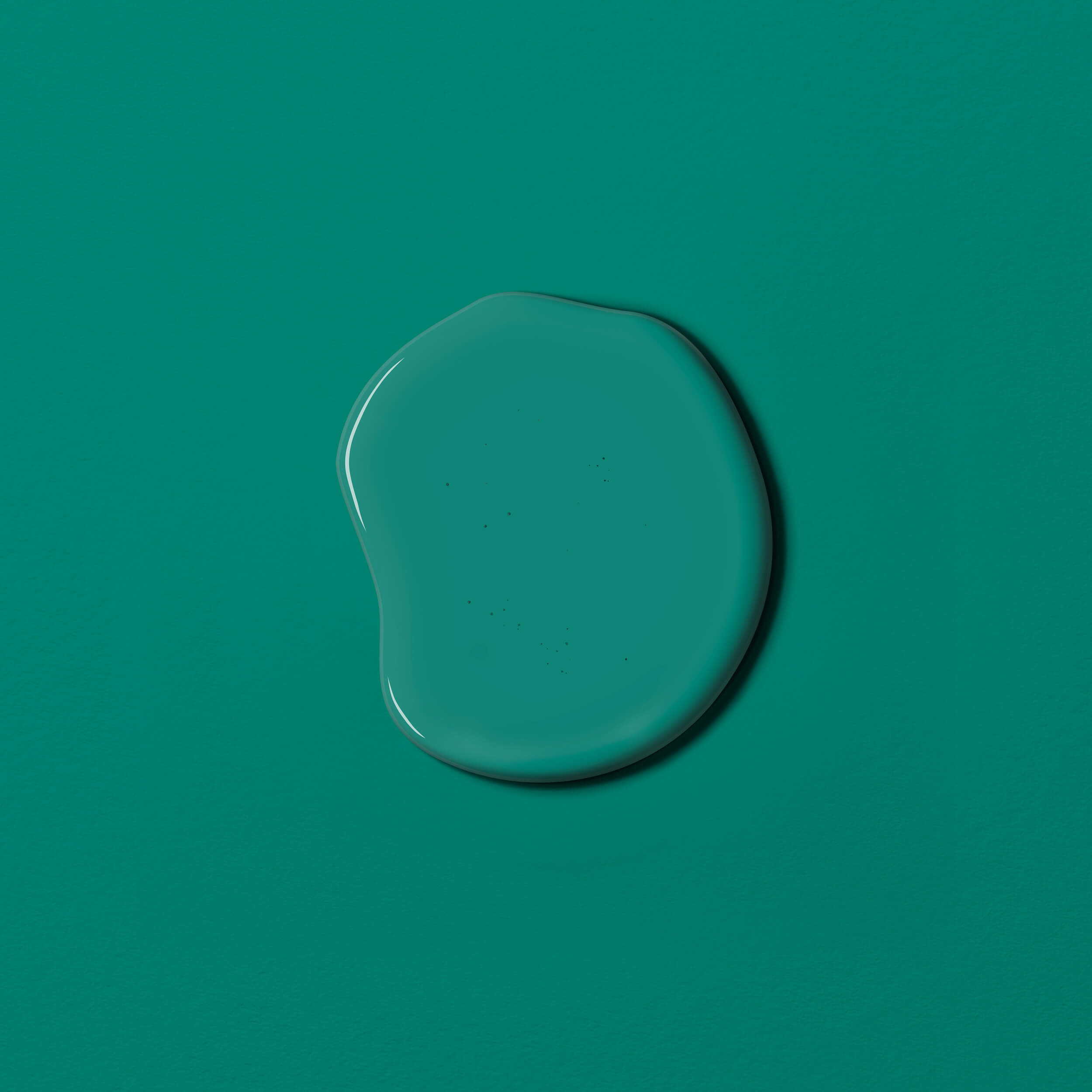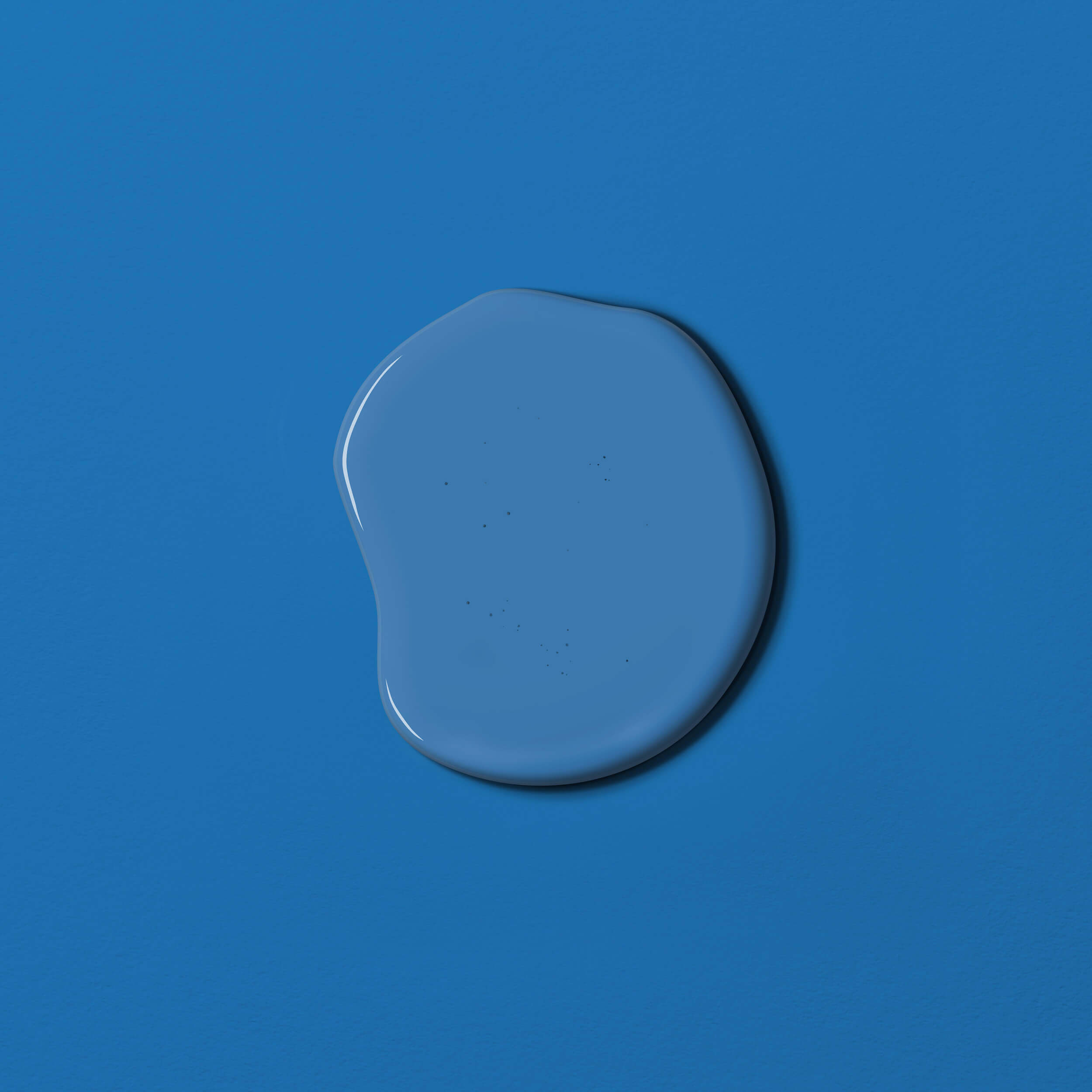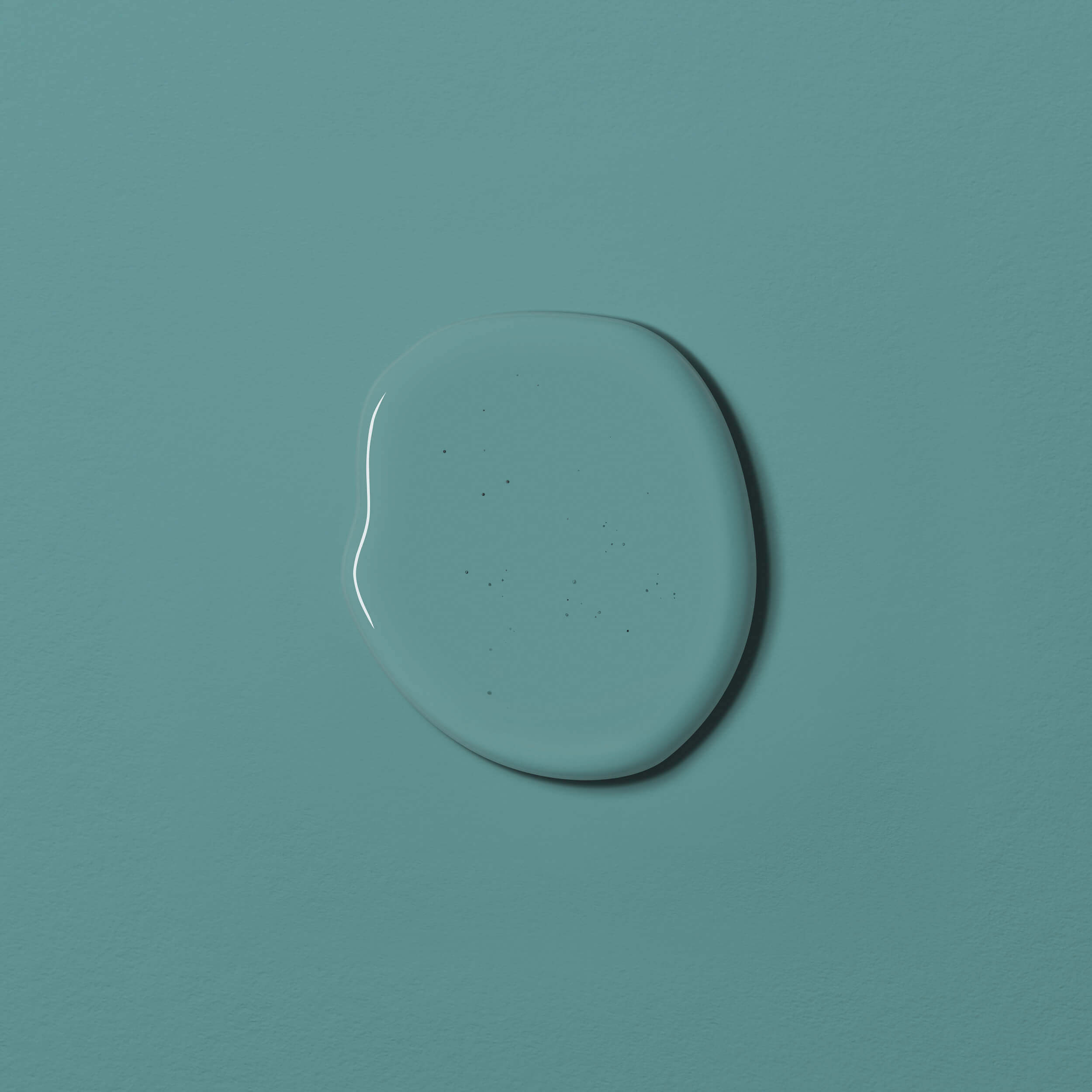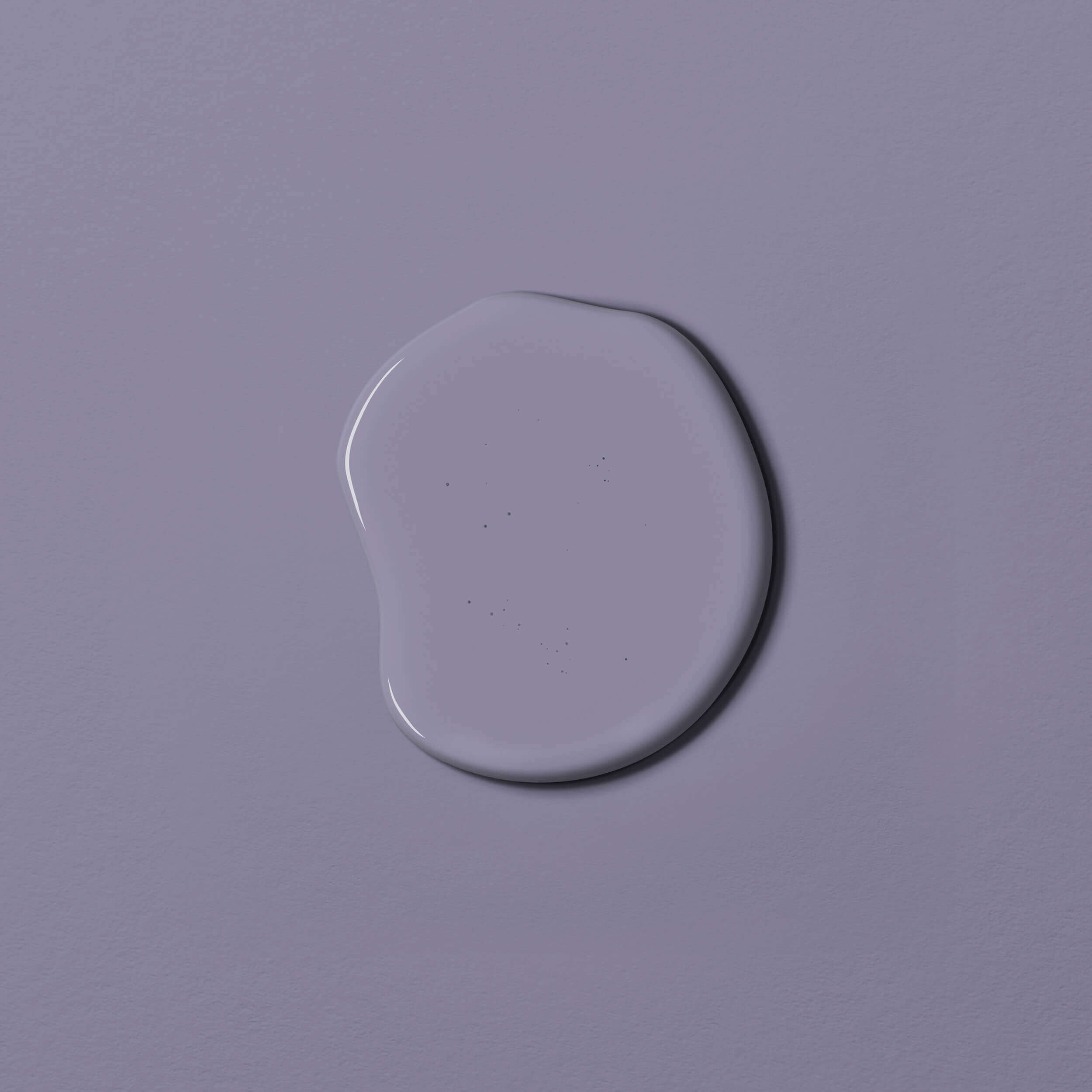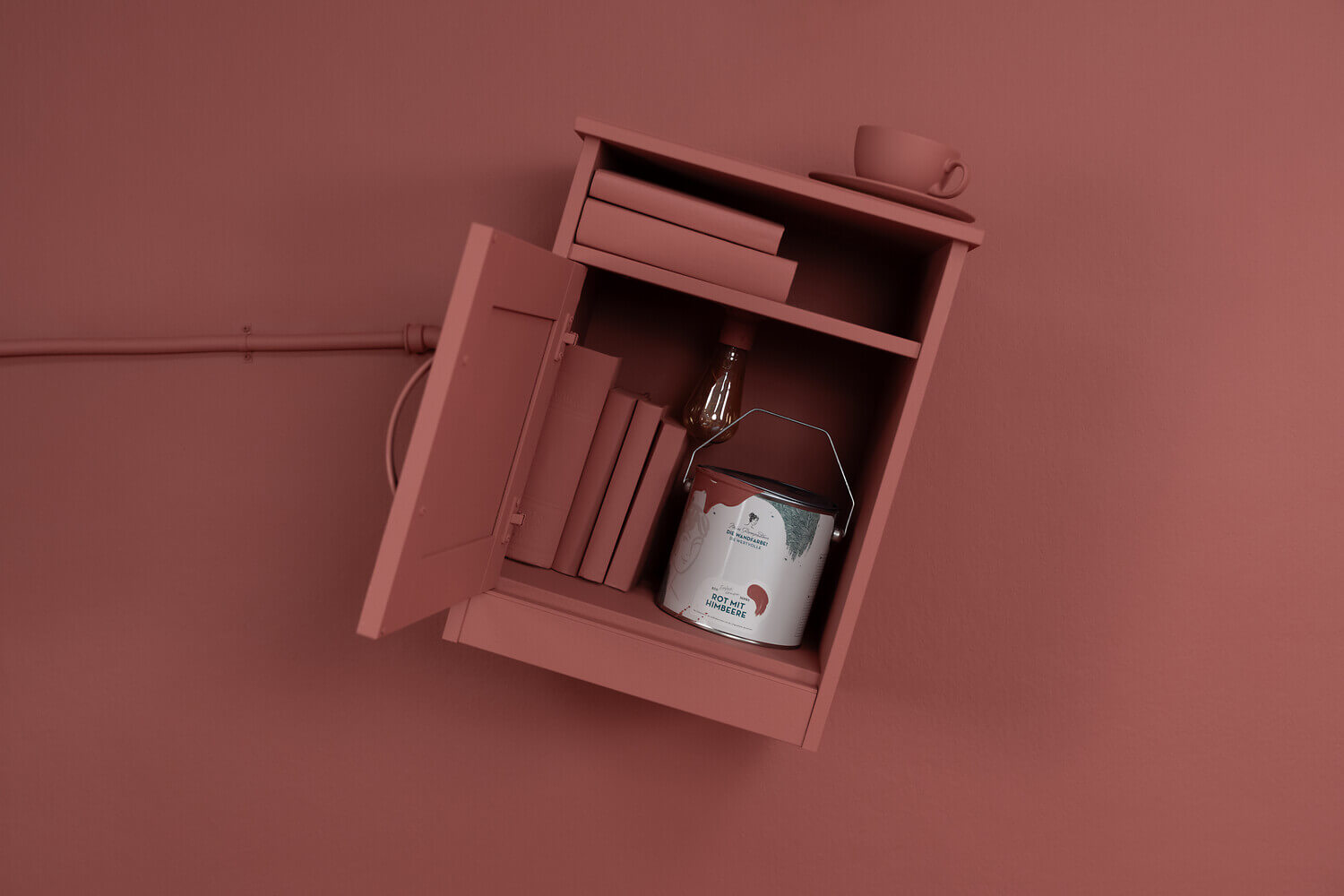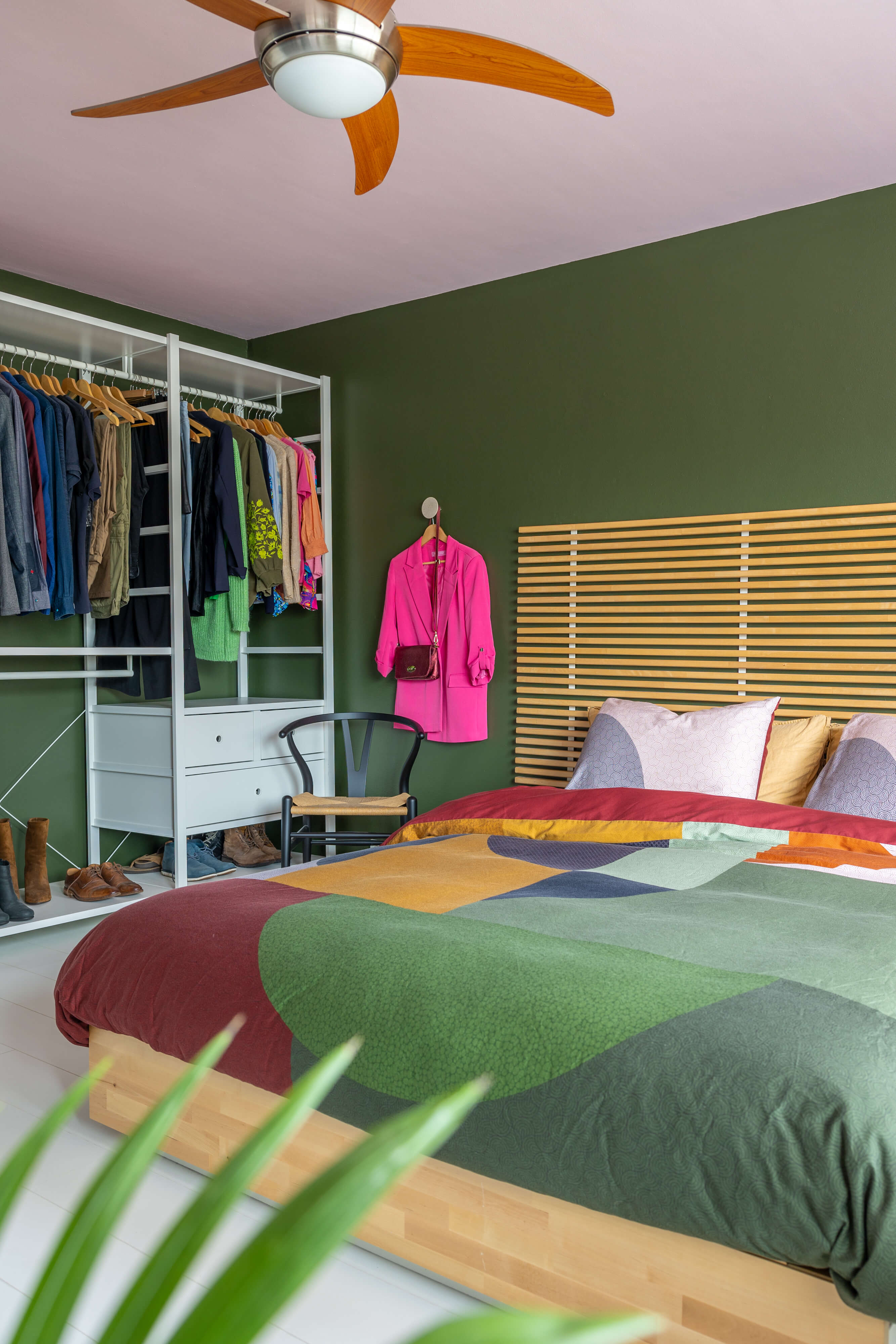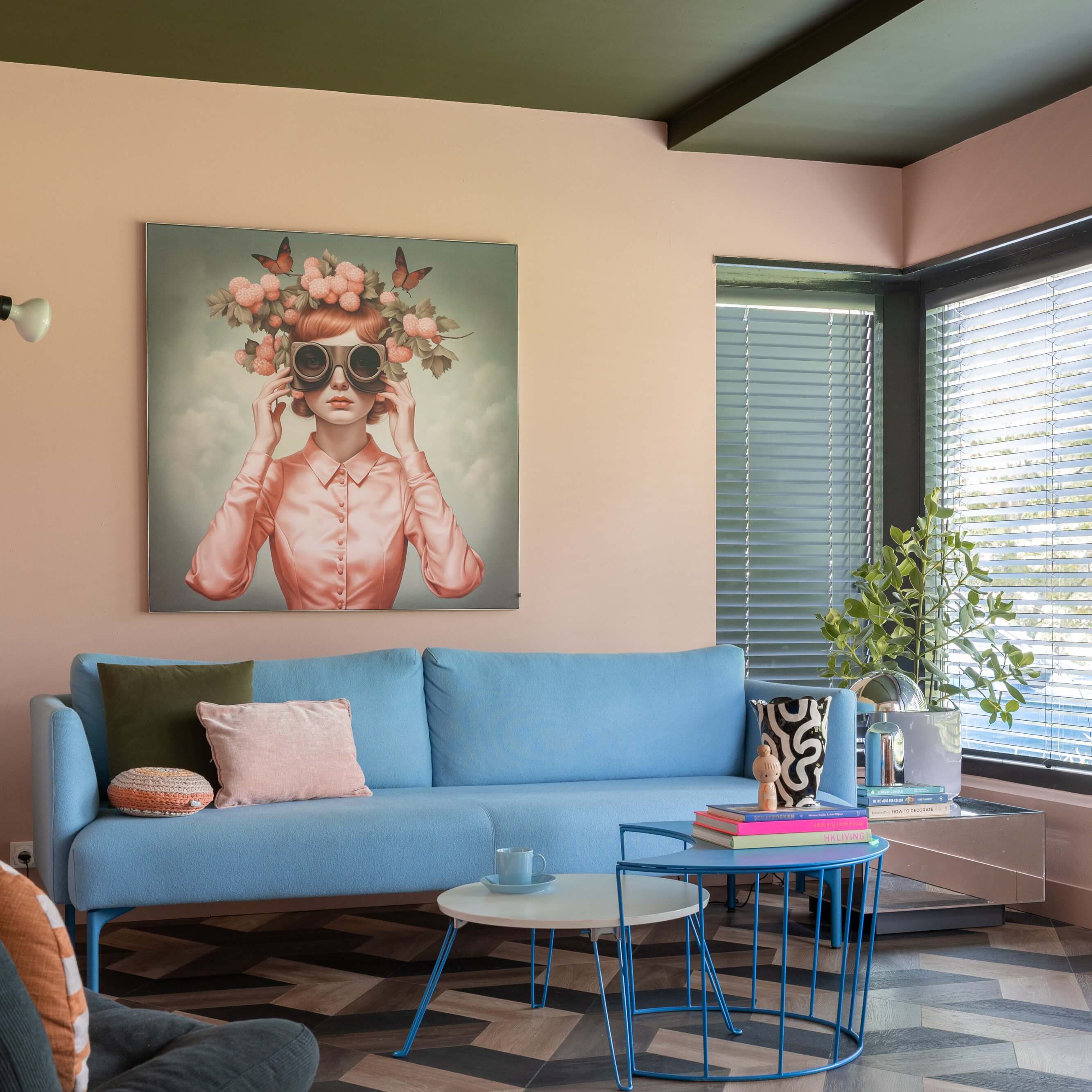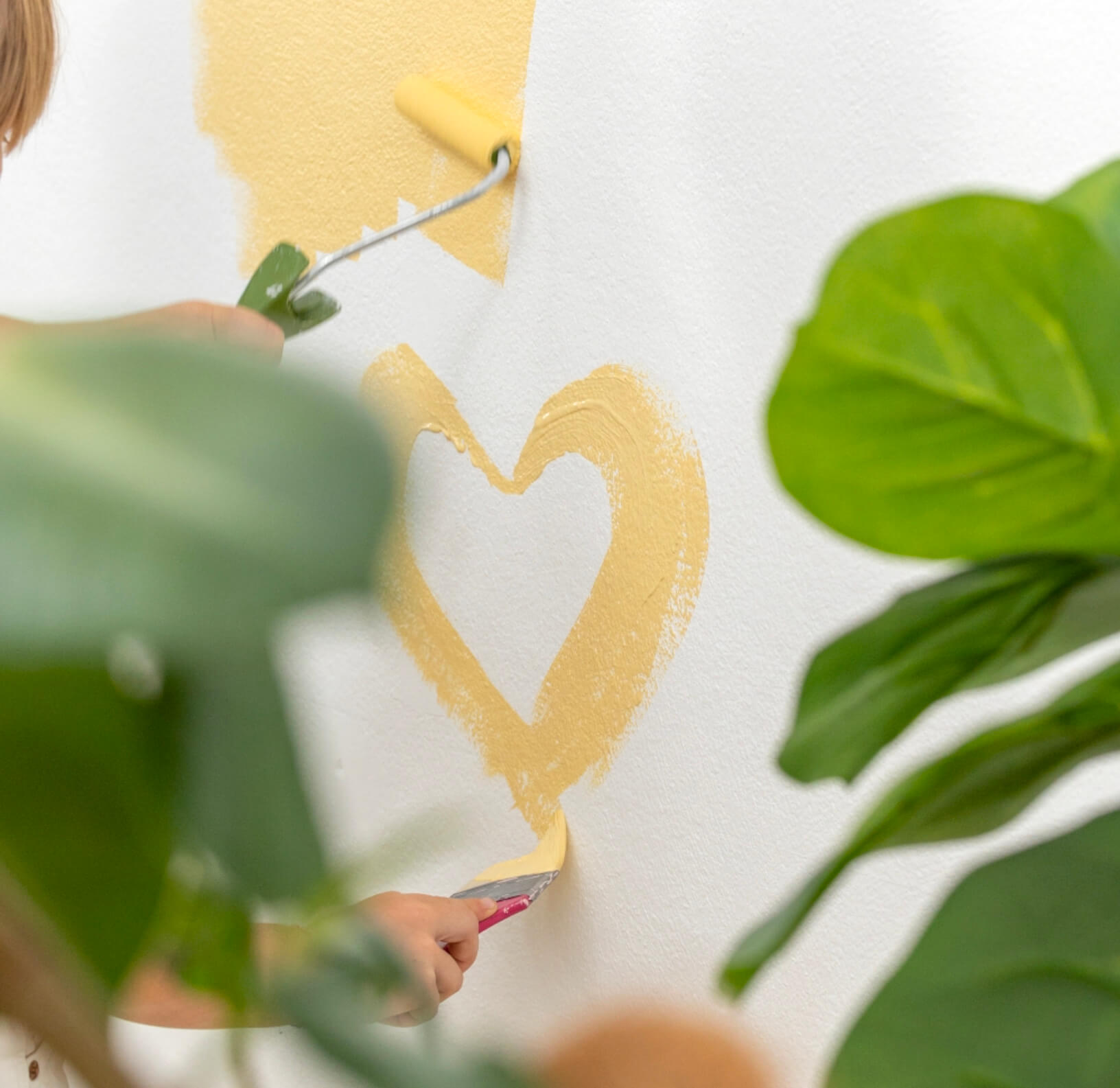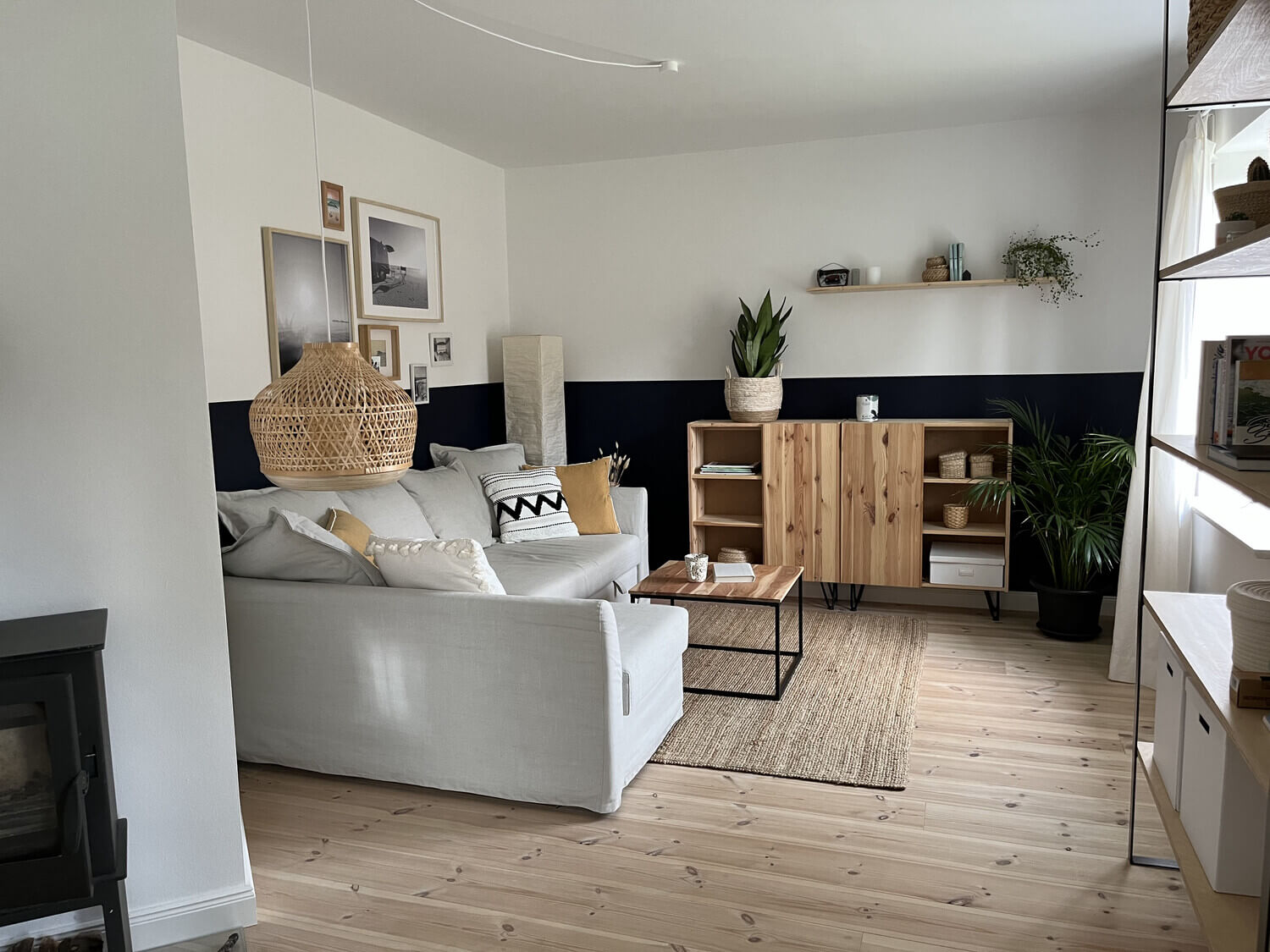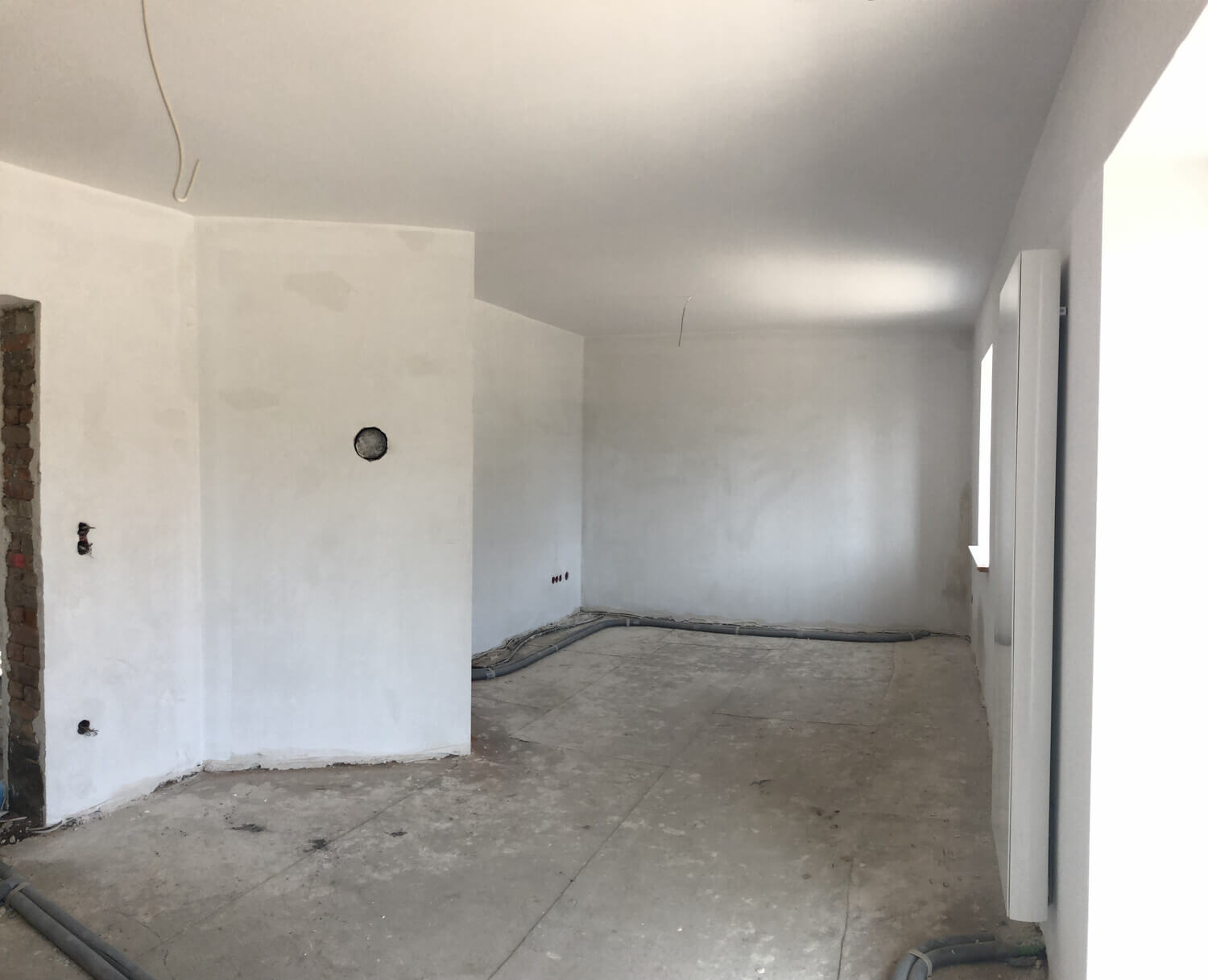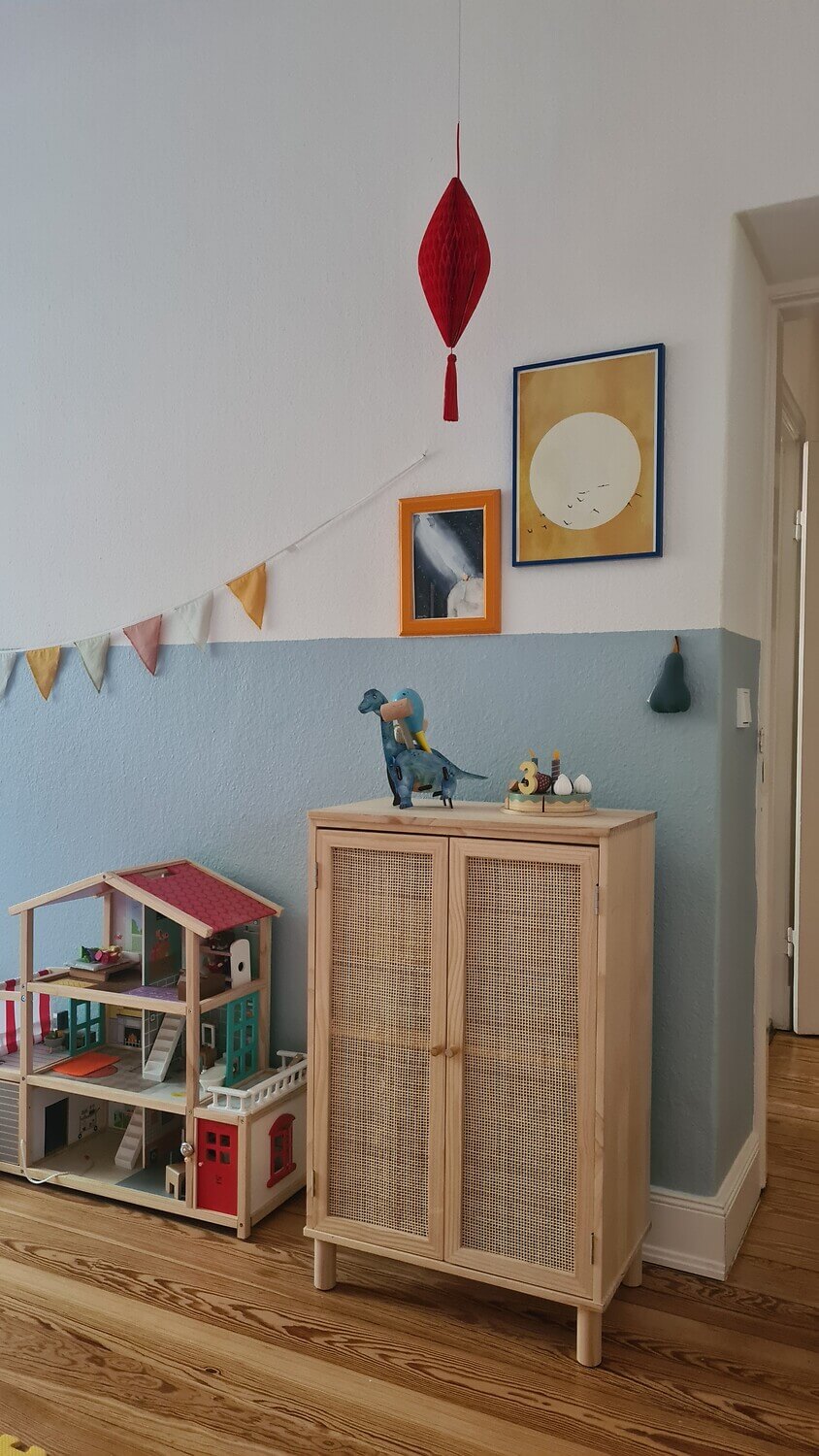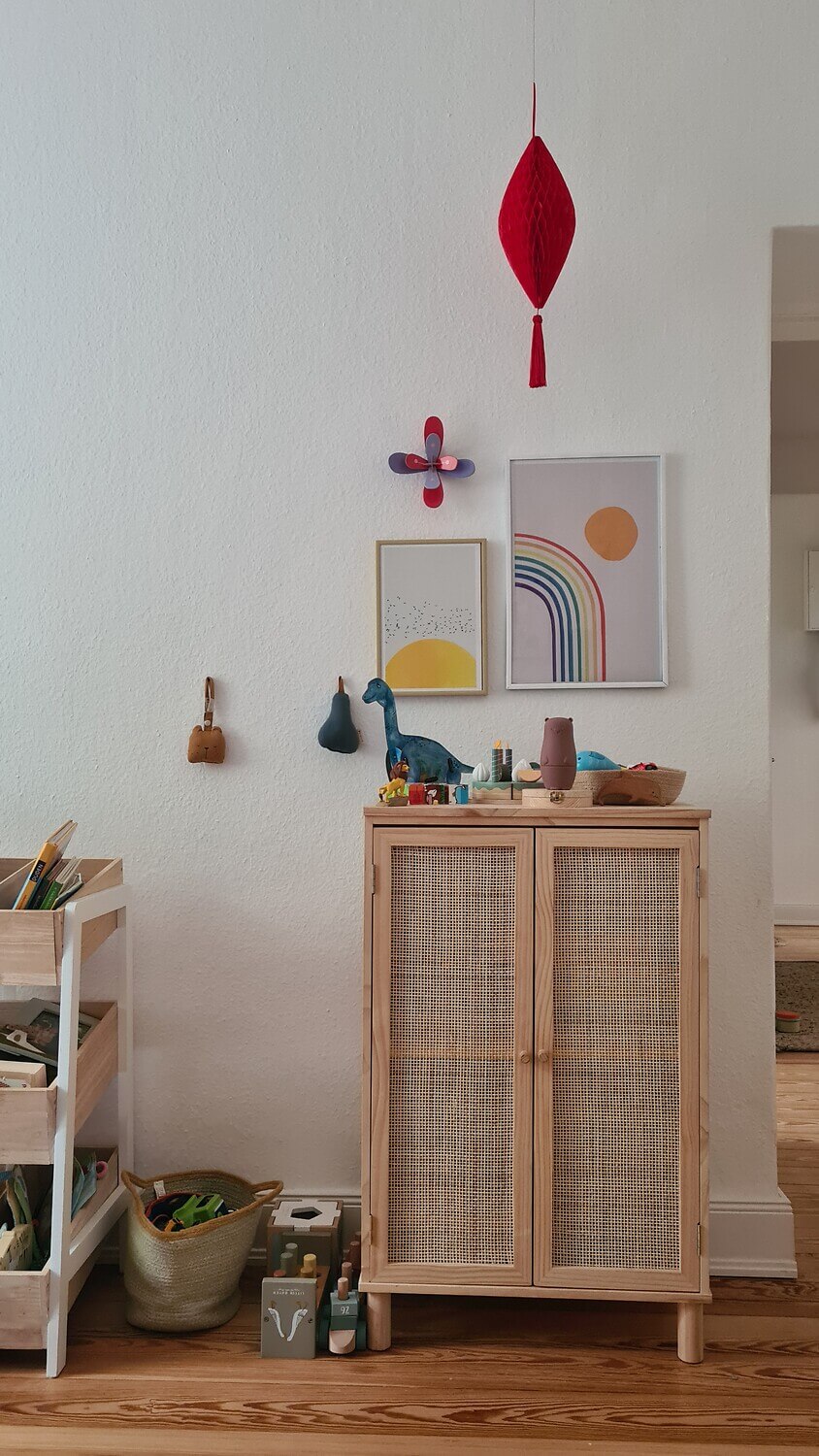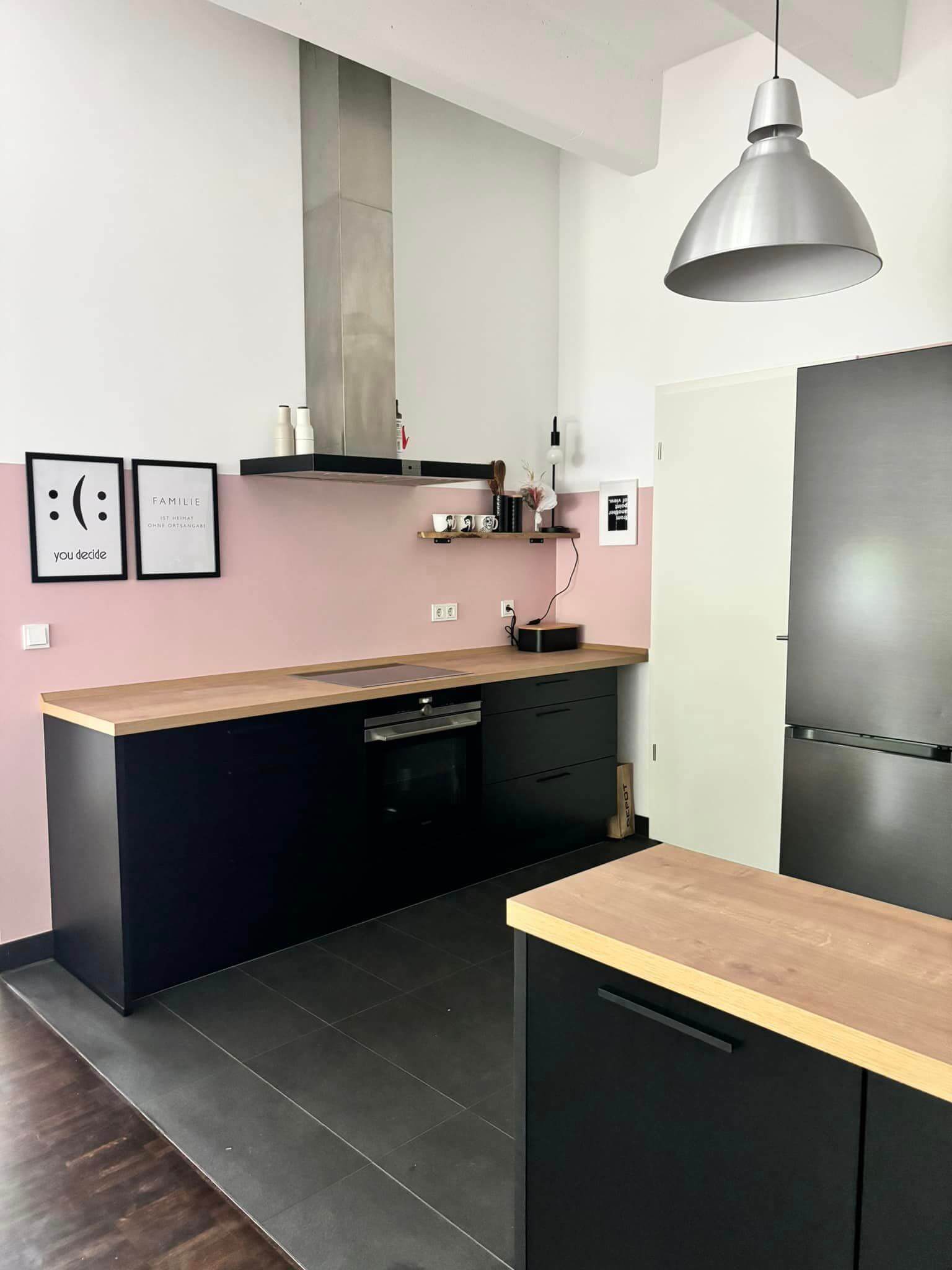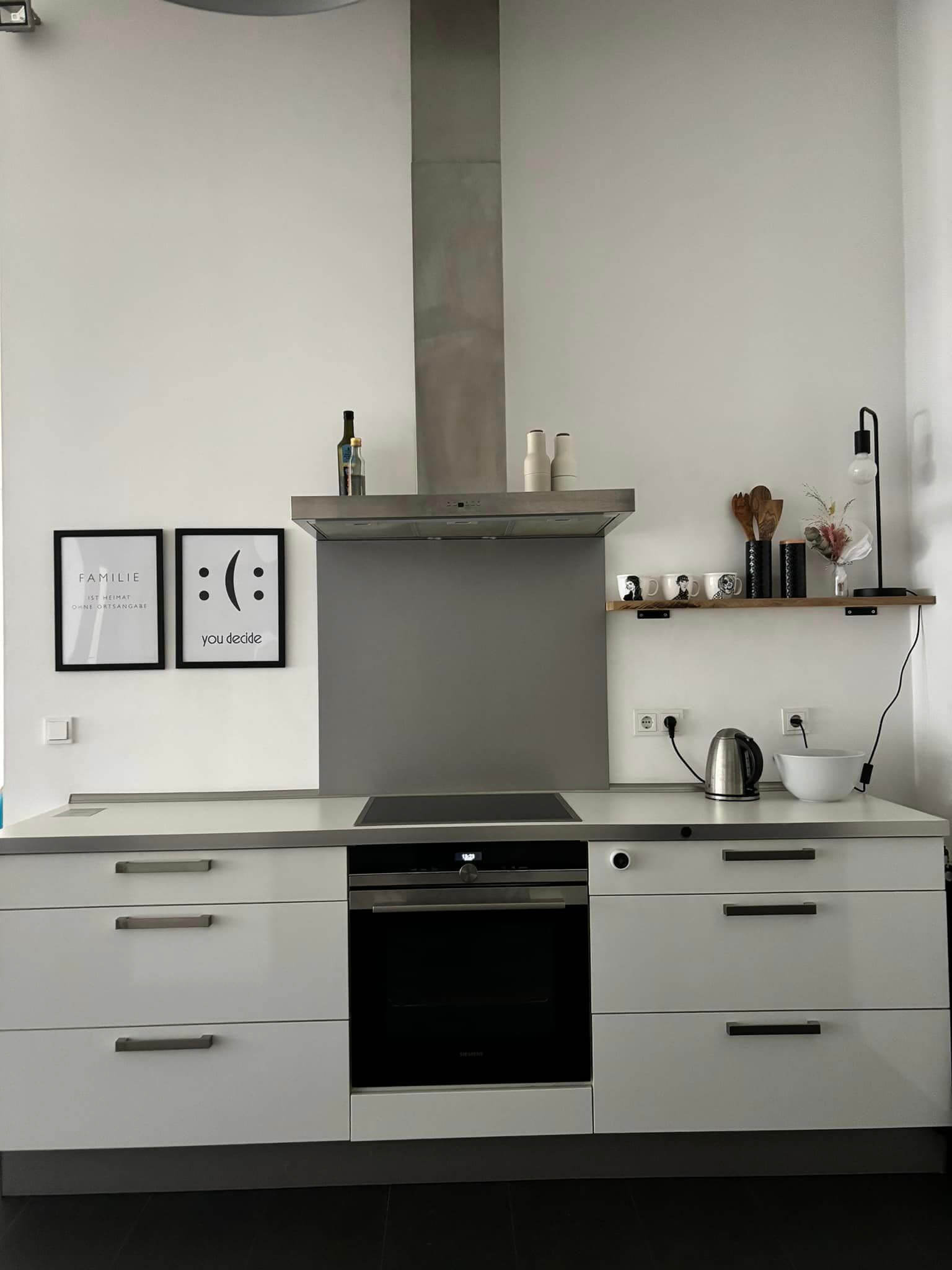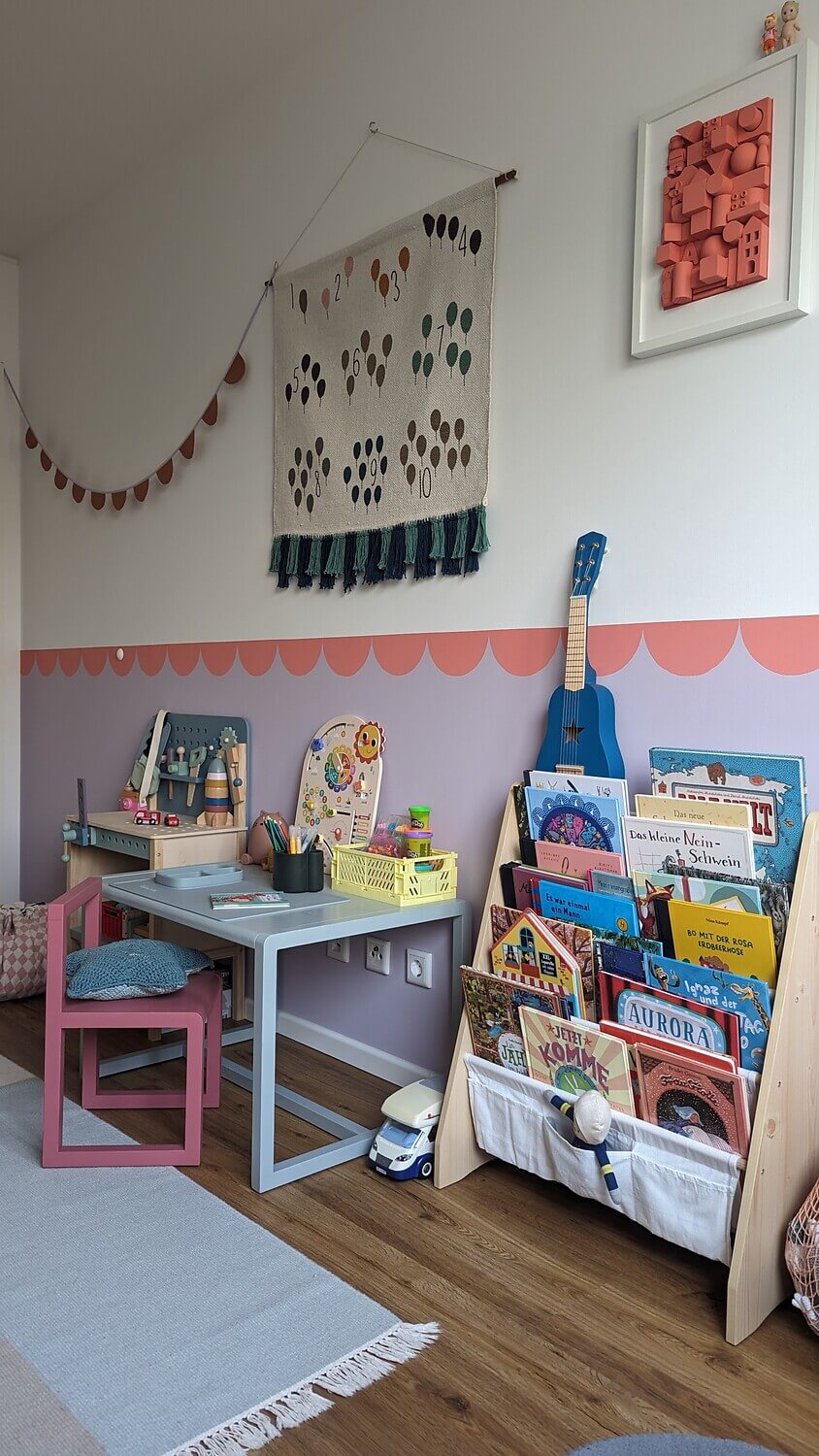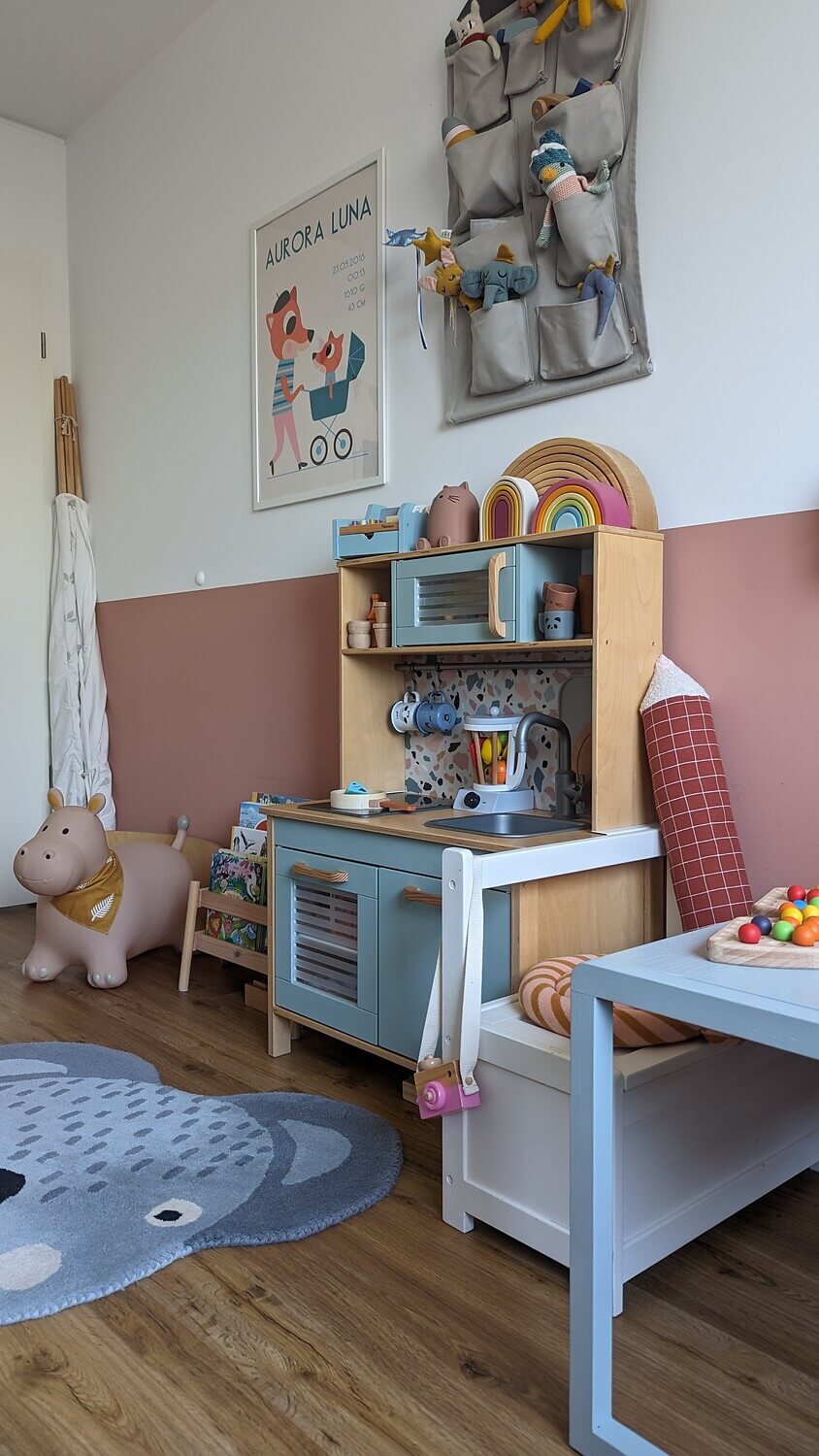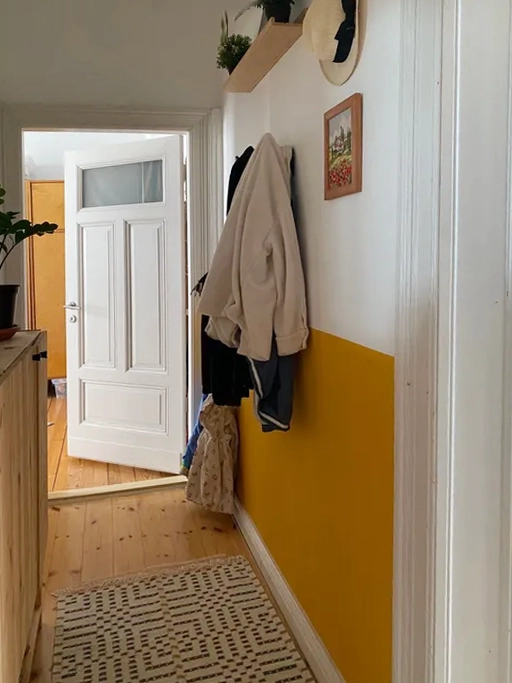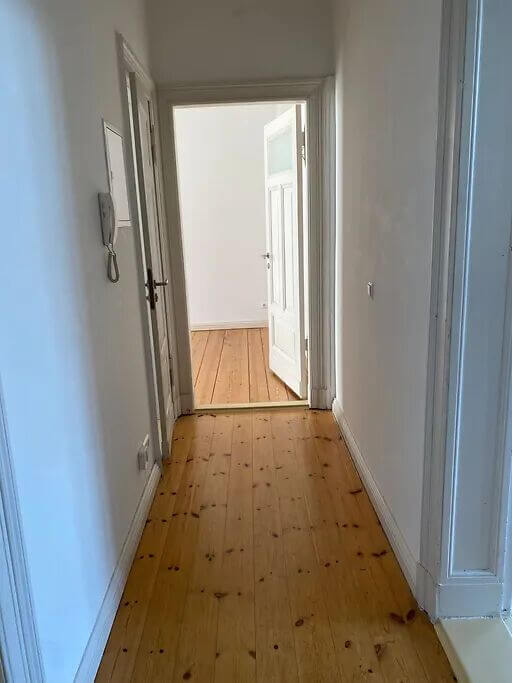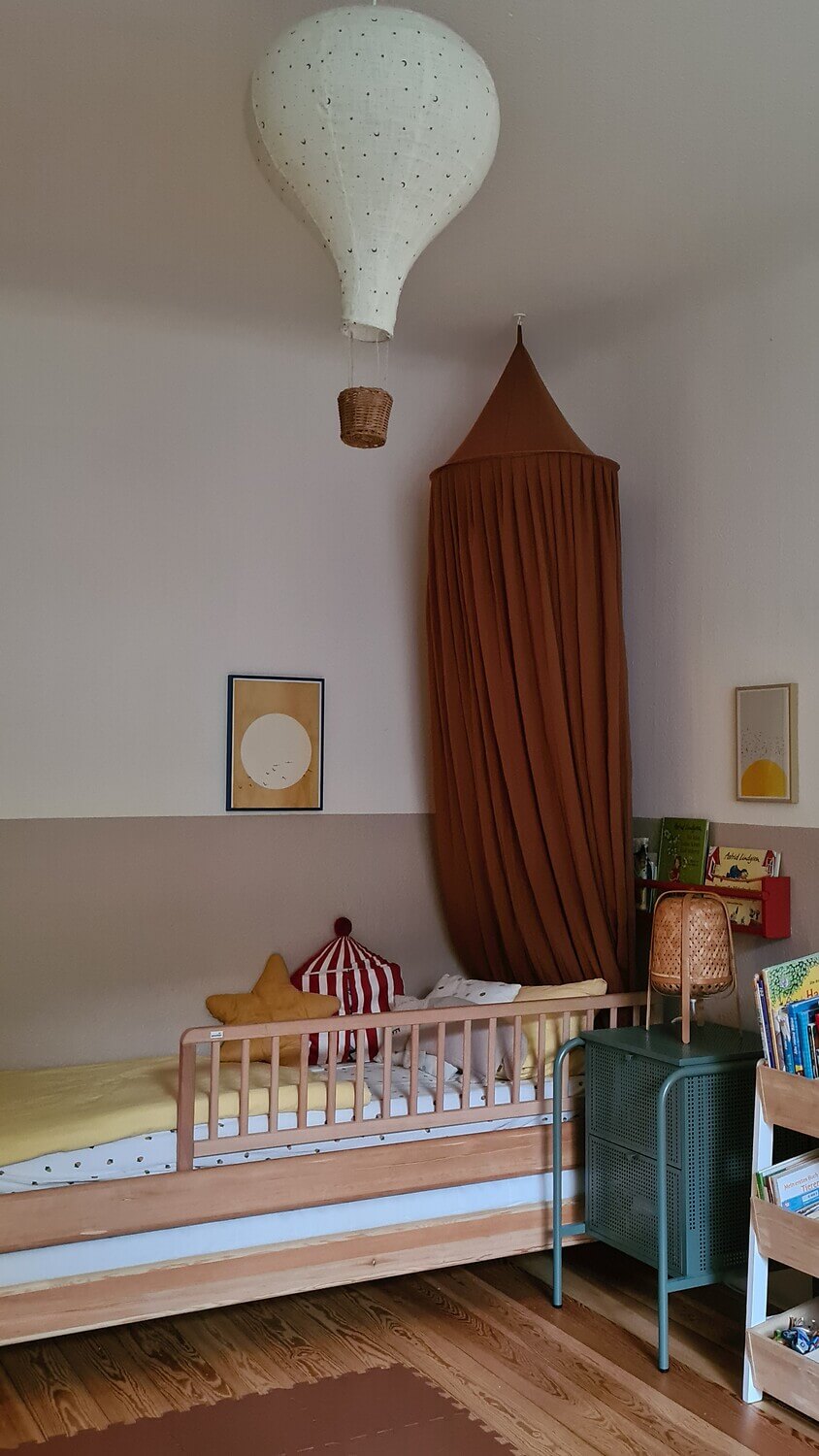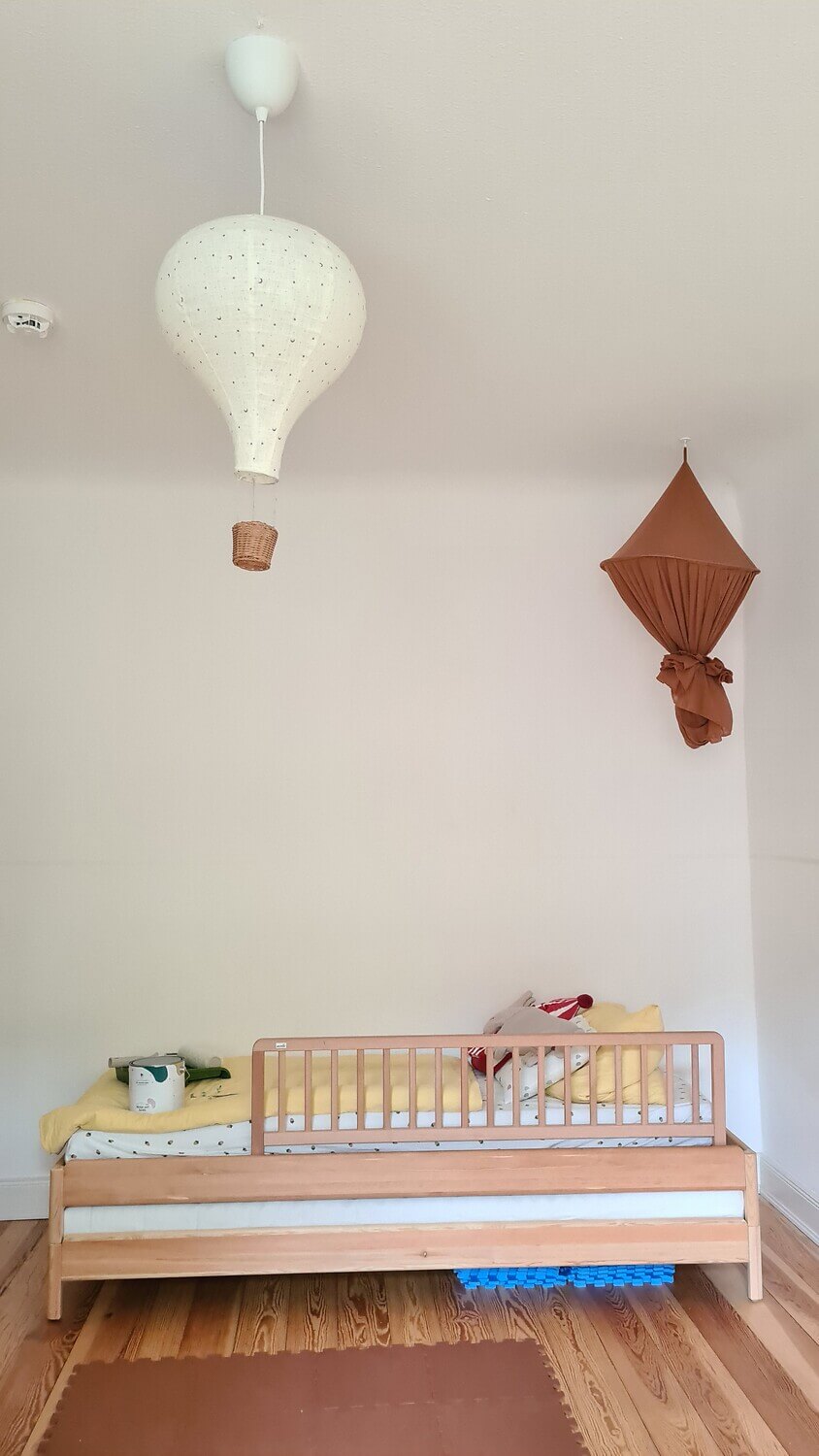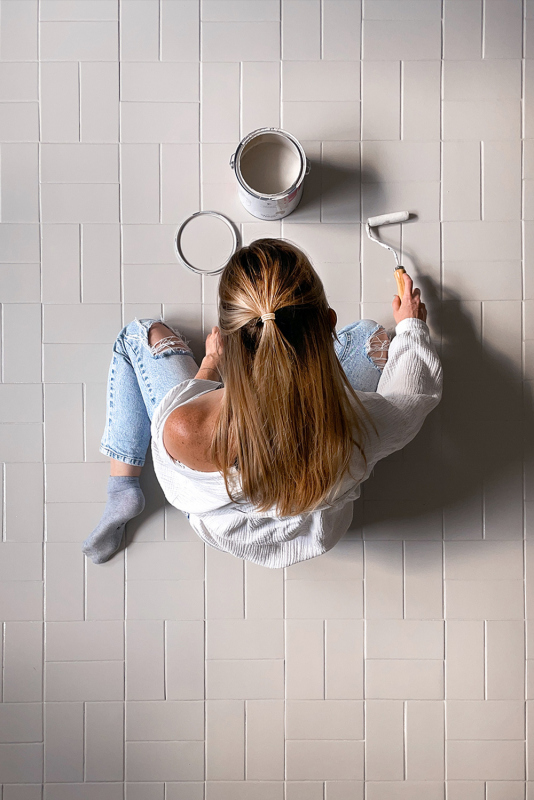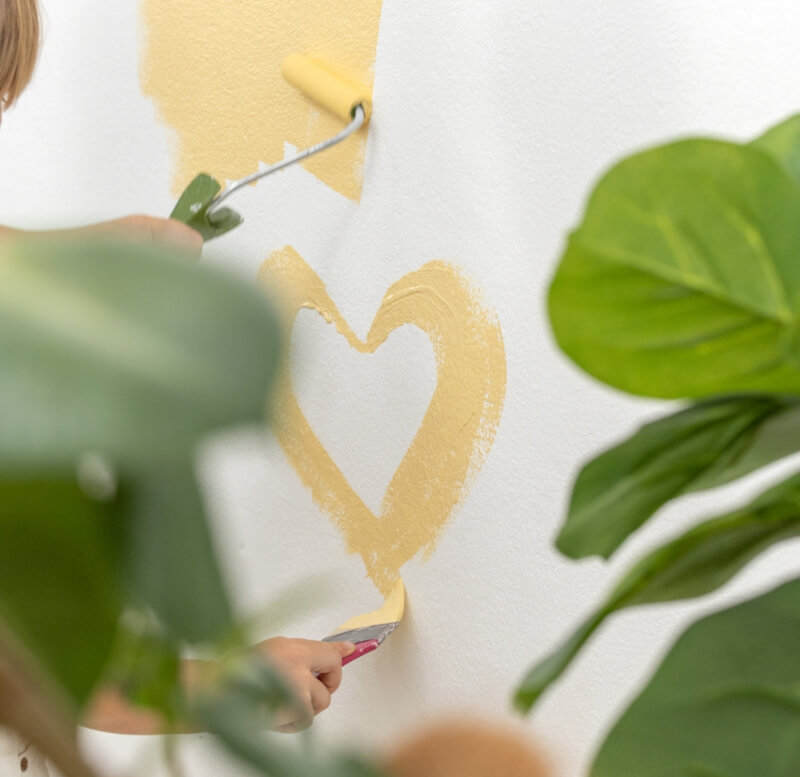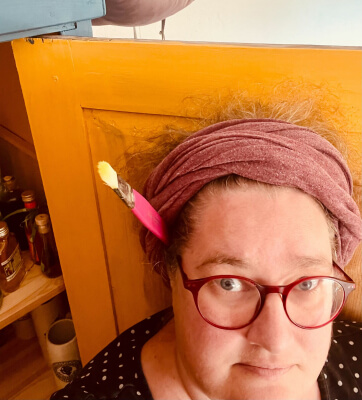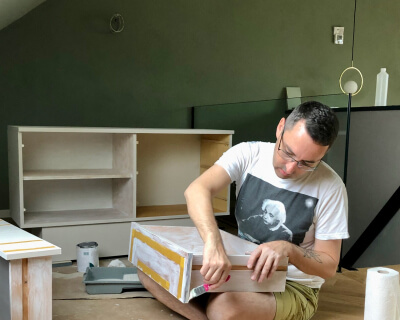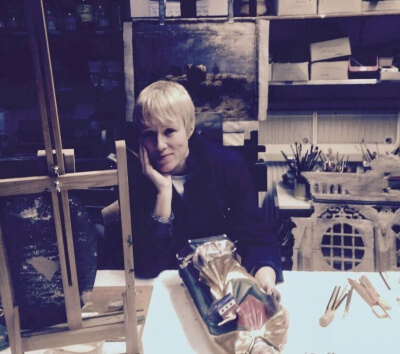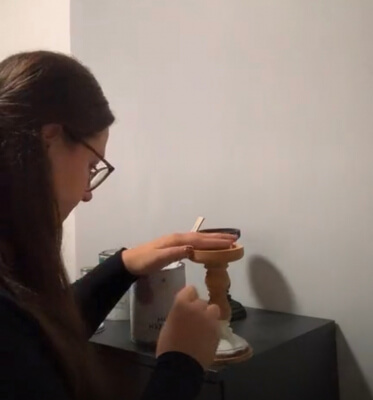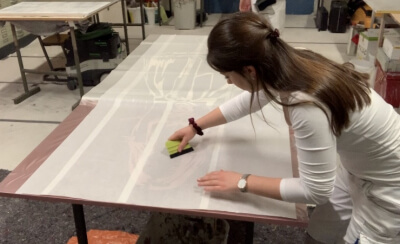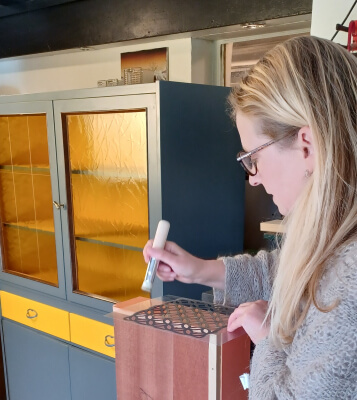Paint walls half-height
5 min reading time
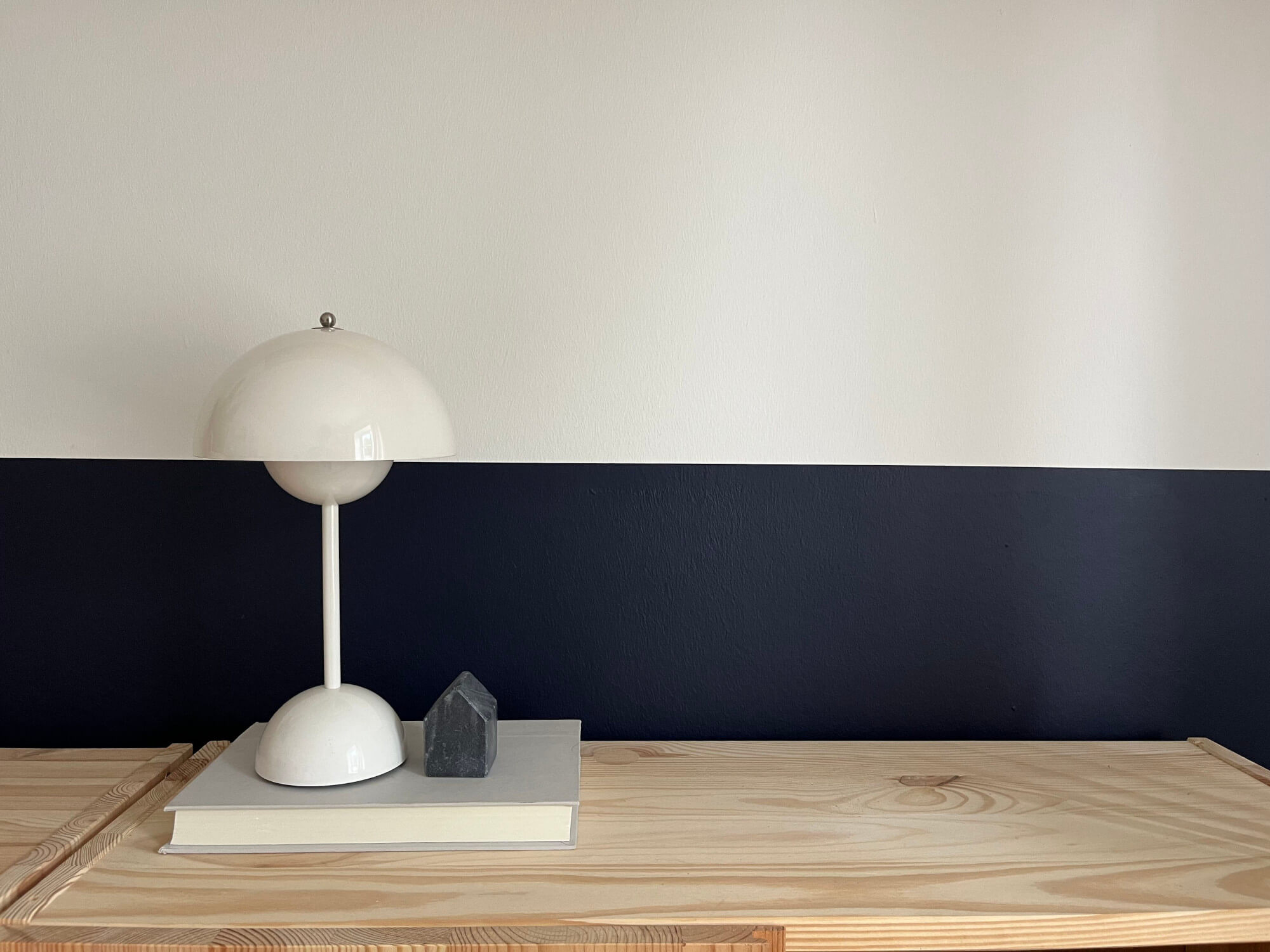
You can see them again and again in home magazines and interior design books: half-height painted walls. This usually looks very inviting. This wall design goes wonderfully with a sophisticated country house style. But it can also emphasise a classically elegant ambience. In any case, you can create a vintage and nostalgic flair with a two-tone wall design
Table of content
1. Before/after pictures of half-height painted walls
2. The effect of a half-height painted wall
3. Paint walls half-height: Simple instructions
4. Paint a wall in two colours: Ideas for patterns
5. FAQs: Frequently asked questions about painting walls half-height
If you're into creative wall design, paint your room with colours that are separated by a horizontal line. A two-tone colour scheme is a great idea not only in stairwells and hallways, but also in children's rooms, bedrooms and even living rooms and bathrooms. You can find tips on how to divide the walls and optimise the effect of the room in this article.
Before/after pictures of half-height painted walls
Let our painting community inspire you! From children's rooms to living rooms, our customers have already embellished many rooms with a half-height painted wall!
The effect of a half-height painted wall
Horizontal lines make any room appear wider and more spacious. Whereas in the past, the lower wall surfaces were often panelled with wood, today painting in two colours is an inexpensive and effective alternative for adding interest to a room. By skilfully using different colours, you can emphasise certain elements, such as your chest of drawers or seating area, and make them appear in a different light. For example, you can achieve a beautiful and cosy effect by painting the area around your sofa with a dark, calm colour
There are various tips for combining several colour shades. The most commonly used colour combination is a rather dark, intense colour in the lower area and a tinted white tone for the upper areas. This combination is a good compromise between coloured and white walls and makes your room appear spacious and light. Since white tones also have different nuances, make sure that your white is tinted with pigments that harmonise with the lower colour. It is best to paint the ceiling the same colour as the upper wall area.
It can also look very chic to combine two differently intense colour shades from the same colour spectrum. For example, paint a strong shade of pink such as LittlePomp Rose & Unique in the lower wall area and a very soft rosé such as Rose & Fearless in the upper area. Alternatively, you can combine grey colours, such as our strong, warm-grey Grey with Concrete below with the soft grey tone of Grey with Seasalt above. This creates a uniform room effect that doesn't appear too intense.
You can also emphasise the horizontal line between the two colour shades. This works well with a stencil, for example. A horizontal line in a contrasting colour can also have a great effect. I'm sure you have lots of ideas - as always with MissPompadour, there are no limits to your creativity.
Paint walls half-height: Simple instructions
Step 1: Select colour shades
Choose two well-matched colour shades. The darker colour shade must always go on the bottom. If you're not sure which shades are a good match, order our colour cards or get help from our expert advice team. You can reach us by phone, live chat, WhatsApp and email.
Step 2: Divide up the wall
First, you should determine the height at which the horizontal line should run between the 2 colour shades. There is no exact recommendation for this as it depends on the height of the room. For normal rooms with a height of around 2.50 m, a height of around a quarter of the room height is recommended. The height of the line should also depend to some extent on the furniture that will be placed in front of the wall. For very high ceilings, you can apply the lower colour up to about a third of the room height. In stairwells, the darker colour shade can also be applied higher than the normal room height.
Step 3: Draw the boundary line
Draw a horizontal line on the wall using a spirit level and a soft pencil.
Step 4: Paint the upper area
Always start at the top and work your way down. If desired, paint the ceiling first, then the upper wall area. Paint slightly beyond the desired edge. Note that a second coat is necessary for the intensive colour effect. Work on the large areas with a paint roller and use the fine MissPompadour brush along the edges for a precise coat. Allow the paint to dry thoroughly.
Step 5: Paint the lower area
Carefully trace your border line. Attach your adhesive tape along this line and press it down firmly. Tape exactly and pre-paint the tape and the edge with the colour shade of the upper wall section. Leave the edge to dry for a few hours. Then work on the lower wall area with the darker colour. Carefully peel off the adhesive tape while the paint is still wet - done!
Paint walls in two colours: Ideas and tips for patterns
Stripes applied to the upper half of the wall, for example, where the lower and upper wall paint alternate, create a beautiful classic look. To do this, you can mask off the wall at the intervals to be painted and apply stencils to the upper half of the wall to create interesting effects. It is always important that the focus of the colour is on the lower area. You can find more ideas and details on this in our blog Painting walls with patterns
FAQs: Frequently asked questions
At what height should the second colour start?
The height of the horizontal wall division depends heavily on the height of the room in question. For normal room heights, assume a quarter for the lower wall section. For high rooms, you can paint about a third of the ceiling height with the lower colour and the rest above it in the second colour shade. However, these are only guidelines and you should also take the height of the windows and furniture into consideration.
Why should you paint a wall halfway up?
- A horizontal room division makes rooms appear wider and more spacious. Despite the intense colour scheme in the lower part of the wall, the room will not appear dark if you choose a light-coloured paint for the upper half of the wall.
- In addition, any damage or soiling can be quickly painted over without having to work on the entire room. This type of wall design is therefore particularly recommended for bathrooms, corridors and stairwells.
- By painting the lower part of the wall in an intense colour, the part of the wall that is subject to the most wear and tear often becomes less susceptible to soiling.
- Rooms decorated in this way also have a cosy and somewhat nostalgic feel. This creates a cosy atmosphere, especially in children's rooms and bedrooms.

